#Paper Bowl Manufacturer
Explore tagged Tumblr posts
Text
Paper Salad Bowl - Salad Bowl Manufacturer - Carma Paper Cup

Carma offers an exclusive collection of eco-friendly paper salad bowl in India. As leading manufacturers in Morbi, we provide top-quality paper bowls.
0 notes
Text
Quenching Thirst Responsibly with Paper Glasses in Noida
Hey there, thirsty folks of Noida! Are you tired of seeing plastic cups pile up in landfills and clutter our beautiful city? Well, fear not, because Ishwara has arrived to shake things up and offer a refreshing solution to our plastic problem!
Let me introduce you to Ishwara—a brand that's not just about providing a convenient way to enjoy your favourite beverages but also about making a positive impact on our environment. Ishwara's mission is simple yet powerful: to offer eco-friendly paper glasses that are as kind to the planet as they are to your thirst.
Always in the heart of Nature
you're out and about in paper glass in India, craving a cool drink on a hot day. Instead of reaching for a plastic cup that will end up polluting our streets and waterways, you can now choose Ishwara's paper glasses. Made from biodegradable materials, these cups break down naturally over time, leaving behind no harmful traces. Plus, they're recyclable and compostable, so you can sip guilt-free knowing you're making a difference.
But Ishwara isn't just another brand selling cups—it's a movement. It's about inspiring change and showing that small actions can have a big impact. With every sip from an Ishwara paper glass in India,, you're not just hydrating yourself; you're taking a stand against plastic pollution and supporting a more sustainable future for Noida and beyond.

Join us save our environment
What sets Ishwara apart is its commitment to quality and innovation. Each paper glass is meticulously crafted to ensure durability and functionality, so you can enjoy your drink without worrying about leaks or spills. And with a range of sizes available, from small coffee cups to large party glasses, Ishwara has something for every occasion.
But perhaps the best part of choosing the best paper glass in Noida is the sense of pride that comes with it. By supporting this local brand, you're not only making a positive impact on the environment but also contributing to the growth of our community. Ishwara isn't just a brand; it's a symbol of our collective commitment to creating a cleaner, greener future for generations to come.

So, the next time you're in need of a drink in Noida, why not choose the best paper glass in Noida? Together, let's raise our glasses to a brighter, more sustainable tomorrow. So guys are you ready!
#disposable food containers#paper boxes in india#ishwara#paper boxes in noida#paper food containers#disposable paper products#disposable paper cups manufacturer#paper cups in india#best paper container online#paper bowls in india
0 notes
Text
Disposable Food Containers
Check out these handy disposable food containers for easy meals on the go. They keep your food fresh and are good for the environment too. Perfect for busy days, you can say goodbye to washing up and enjoy hassle-free, eco-friendly dining with our disposable food containers – making life convenient and thoughtful.
1 note
·
View note
Text
Dona Plate Making Machine

A “dona plate making machine” typically refers to a machine used for manufacturing disposable plates and bowls, often made from materials like paper, thermocol (polystyrene foam), or leaves (such as palm or banana leaves). These machines are commonly used in the production of disposable tableware for various purposes like serving food at parties, events, or in street food stalls, and they are popular because they are cost-effective and environmentally friendly.
The process of making paper plate making machine with such a machine typically involves: Material Loading: Raw material (usually rolls of paper, thermocol sheets, or leaves) is loaded into the machine.Printing (Optional): If desired, the machine may have an option for printing designs or logos on the plates.
Die Cutting: The machine uses a die cutting process to cut the material into the desired plate or bowl shape.
Shaping and Forming: The cut material is then shaped and formed into the specific design of a plate or bowl. In the case of paper, this might involve heating and pressing to achieve the desired shape.
Drying (if needed): Some materials, like thermocol, may require a drying process to set their shape.
Stacking and Packaging: Once the plates or bowls are formed and dried, they are usually stacked and packaged for distribution.
These machines come in various sizes and capacities, and their complexity can vary depending on the type of material they are designed to process and the specific features they offer. Some machines are manual and require more human intervention, while others are automated for higher production rates.
Raw Material Loading: The machine is loaded with rolls or sheets of paper material, which can be in the form of paper rolls, paper sheets, or pre-cut paper circles. The choice of raw material can vary, but it is typically food-grade paper.
Paper Feeding: The machine has a mechanism to feed the paper into the manufacturing process. The paper is usually fed in a continuous manner.
Molding: The machine uses heat and pressure to mold the paper into the shape of the dona (paper plate or bowl). It has specific molds or dies for creating different sizes and designs of donas.
Cutting: Once the paper is molded into the dona shape, the machine cuts it to the required size. This can include cutting excess paper and shaping the edges of the dona.
Embossing or Printing (Optional): Some advanced machines may have embossing or printing capabilities to add designs, patterns, or branding information to the paper donas. This step is not always included, and it depends on the machine’s features and the manufacturer’s requirements.
Drying and Stacking: Depending on the design and material used, the automatic paper plate making machine may go through a drying process to remove any moisture. After drying, the machine may stack the finished donas, making them ready for packaging.
Packaging: The manufactured paper donas are typically stacked and packaged for distribution. Packaging can vary, but it is often in bundles or cartons.
Paper Dona Making Machines come in different sizes and capacities, ranging from small, manually operated machines suitable for small-scale production to large, automated machines for mass production. The choice of machine depends on the production volume and specific requirements of the manufacturer.
#Paper plate making machine#Paper plate machine#Paper plate manufacturing machine#Automatic paper plate making machine#Manual paper plate making machine#Semi-automatic paper plate machine#Hydraulic paper plate machine#Pneumatic paper plate machine#Disposable plate making machine#Single die paper plate machine#Double die paper plate machine#Four die paper plate machine#Thermocol plate making machine#Paper dish making machine#Paper bowl making machine#industry#Plate forming machine#Plate pressing machine#Plate cutting machine#Paper plate molding machine#Paper plate punching machine#Paper plate printing machine
1 note
·
View note
Text
Indigenous genocide and removal from land and enslavement are prerequisites for power becoming operationalized in premodernity, a way in which subjects get (what Wynter names) “selected” or “dysselected” from geography and coded into colonial possession through dispossession. The color line of the colonized was not merely a consequence of these structures of colonial power or a marginal effect of those structures; it was/is a means to operationalize extraction (therefore race should be considered as foundational rather than as periphery to the production of those structures and of global space). Richard Eden, in the popular 1555 publication Decades of the New World, compares the people of the “New World” to a blank piece of “white paper” on which you can “paynte and wryte” whatever you wish. “The Preface to the Reader” describes the people of these lands as inanimate objects, blank slates [...]. [Basically, "Man" is white, while non-white people are reduced to an aspect of the landscape, a resource.] Wynter suggests that we [...] consider 1452 as the beginning of the New World, as African slaves are put to work on the first plantations on the Portuguese island of Madeira, initiating the “sugar-slave” complex - a massive replantation of ecologies and forced relocation of people [...]. Wynter argues that the invention of the figure of Man in 1492 as the Portuguese [and Spanish] travel to the Americas instigates at the same time “a refiguring of humanness” in the idea of race. This refiguring of slaves trafficked to gold mines is borne into the language of the inhuman [...].
---
The natal moment of the 1800 Industrial Revolution, [...] [apparently] locates Anthropocene origination in [...] the "new" metabolisms of technology and matter enabled by the combination of fossil fuels, new engines, and the world as market. [...] The racialization of epistemologies of life and nonlife is important to note here [...]. While [this industrialization] [...] undoubtedly transformed the atmosphere with [...] coal [in the nineteenth century], the creation of another kind of weather had already established its salient forms in the mine and on the plantation. Paying attention to the prehistory of capital and its bodily labor, both within coal cultures and on plantations that literally put “sugar in the bowl” (as Nina Simone sings) [...]. The new modes of material accumulation and production in the Industrial Revolution are relational to and dependent on their preproductive forms in slavery [...].
---
Catherine Hall’s project Legacies of British Slave-Ownership makes visible the complicity in terms of structures of slavery and industrialization that organized in advance the categories of dispossession that are already in play and historically constitute the terms of racialized encounter of the Anthropocene. In 1833, Parliament finally abolished slavery in the British Caribbean, and the taxpayer payout of £20 million in “compensation” [paid by the government to slave owners for their lost "property"] built the material, geophysical (railways, mines, factories), and imperial infrastructures of Britain and its colonial enterprises and empire. As the project empirically demonstrates, these legacies of colonial slavery continue to shape contemporary Britain. A significant proportion of funds were invested in the railway system connecting London and Birmingham (home of cotton production and [...] manufacturing for plantations), Cambridge and Oxford, and Wales and the Midlands (for coal). Insurance companies flourished and investments were made in the Great Western Cotton Company, for example, and in cotton brokers, as well as in big colonial land companies in Canada (Canada Land Company) and Australia (Van Diemen’s Land Company) and a number of colonial brokers. Investments were made in the development of metal and mineralogical technologies [...].
The slave-sugar-coal nexus both substantially enriched Britain and made it possible for it to transition into a colonial industrialized power [...]. The slave trade [...] fashioned the economic conditions (and institutions, such as the insurance and finance industries) for industrialization. Slavery and industrialization were tied by the various afterlives of slavery in the form of indentured and carceral labor that continued to enrich new emergent industrial powers from both the Caribbean plantations and the antebellum South. Enslaved “free” African Americans predominately mined coal in the corporate use of black power or the new “industrial slavery,” [...].
---
The labor of the coffee - the carceral penance of the rock pile, “breaking rocks out here and keeping on the chain gang” (Nina Simone, Work Song, 1966), laying iron on the railroads - is the carceral future mobilized at plantation’s end (or the “nonevent” of emancipation). [...] [T]he racial circumscription of slavery predates and prepares the material ground for Europe and the Americas in terms of both nation and empire building - and continues to sustain it.
---
All text above by: Kathryn Yusoff. "White Utopia/Black Inferno: Life on a Geologic Spike". e-flux Journal Issue #97. February 2019. At: e-flux dot com slash journal/97/252226/white-utopia-black-inferno-life-on-a-geologic-spike/ [Bold emphasis and some paragraph breaks/contractions added by me. Text within brackets added by me for clarity and context. Presented here for commentary, teaching, criticism.]
157 notes
·
View notes
Text
Chinese Ceremonial Papers

Many hundreds of varieties of prayer sheets used to be produced by specialist ma-chang printers all over China. Many of the limited range made today are the cheapest offset-litho jobs on the cheapest machine-made papers, but the designs still imitate the original woodblock prints.

Modern Taiwanese sheets of cash, made from recycled paper, sold very cheaply by weight in Taipei.

Mock money and other ceremonial papers for religious ceremonies will be gathered in "bowls" of crude papers, usually made of a mixture of rice-straw and bamboo fibers.

The simplest form of mock money is made traditionally with thin layers of tinfoil affixed to the center of a small piece of bamboo paper, although in contemporary production the cheapest grades of machine-made paper will be used instead, and in Taiwan and Malaysia metallic inks may be used instead of tinfoil.

Here's a piece of mock money in traditional colors with auspicious designs, and tinfoil brushed over with a dye from the pagoda tree to make it resemble gold.

Contemporary Taiwanese ceremonial paper.

Another variety of gold mock money, with inscriptions and symbols for good fortune building up the design, usually still quite well printed from woodblocks on fairly good quality paper, but sometimes now mass-produced by offset lithography.

Contemporary ceremonial paper printed letterpress on a stout machine-made paper in Hong Kong. The yellow coloring might have been brushed on by hand, but otherwise production of these attractive sheets has been mechanized completely.

At the Feast of Hungry Ghosts many large sheets of paper with pictures of all the clothes one's ancestor could need are burned. Although images of the paraphernalia of modern life like cell phones and computers might be printed on these papers, the clothing is always of traditional style.
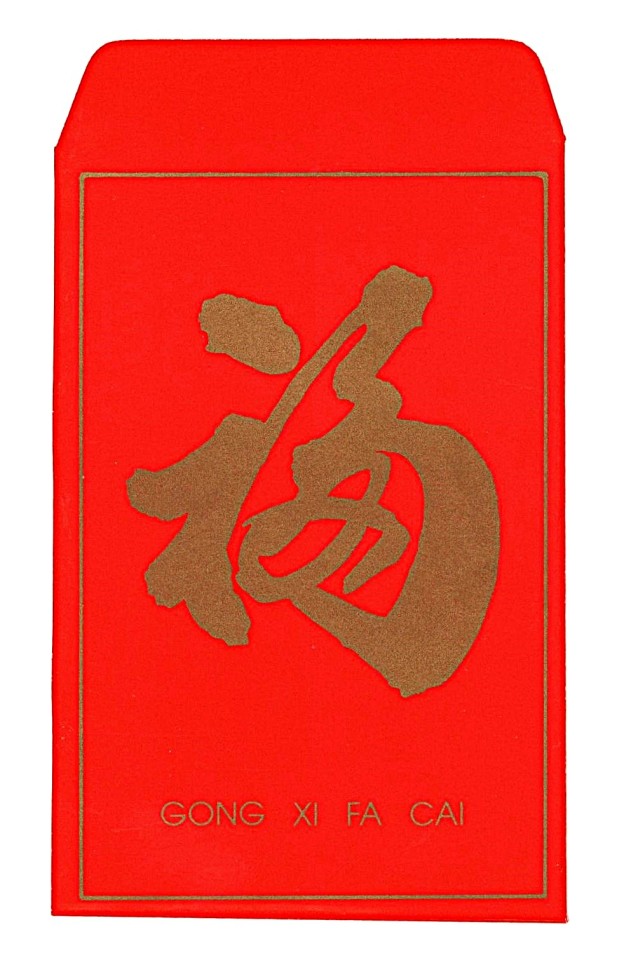
Red paper envelopes with good luck symbols have been used for many years to enclose gifts of money made at New Year. They may be found wherever any ceremonial papers are sold; today usually with elaborate and eye-catching gold-stamping.
Decorative Sunday
The examples shown here are original paper samples included in Roderick Cave's (1935-2019) two-part article on "Ceremonial Papers of the Chinese" published in Matrix 12 (Winter 1992, pp. 51-66) and Matrix 13 (Winter 1993, pp. 161-177), printed at the John and Rosalind Randle’s Whittington Press in Risbury, Herefordshire, England.
In these articles, Cave, a noted print historian, librarian, and educator, discusses the history, manufacturing, printing, distribution, and uses of Chinese ceremonial papers used in rituals, celebrations, and festivals associated with the gods and the ancestors.
Our copies of Matrix are a donation from our friend Jerry Buff.
View more posts on Chinese papers.
View other posts associated with Roderick Cave.
View more Decorative Sunday posts.
#Decorative Sunday#Matrix 12#Matrix 13#Matrix#Whittington Press#Decorative Paper#Chinese ceremonial papers#ceremonial papers#Roderick Cave#Ceremonial Papers of the Chinese#John and Rosalind Randle#decorative arts#Jerry Buff
102 notes
·
View notes
Text
Aziraphale’s secret investigation and overlooked Clues

Remember this frame from Good Omens S02E06? Apparently Aziraphale had been using the empty carton box brought by Jim to store things in. It became a new home to at least two out of three “Lost Quartos” — the supposedly lost Shakespeare plays briefly but hilariously mentioned in the Good Omens book — as well as a very mysterious legal document.

Thought probably half of the Good Omens analysts here, including the ever so wonderful @fuckyeahgoodomens, who managed to find some information about the deceased John Gibson from New Cumnock (1855 - 1905).
Unfortunately the most interesting thing about this early 20th century provincial postmaster was his youngest child James (1894 - 1973), a quite famous stage (West End!) and film actor immortalized on screen in The Master of Ballantrae (1962), Witch Wood (1964) and Kidnapped (1963).
After that particular discovery the fandom-wide search seemingly led nowhere and the topic died a premature death.

And I almost figured it out seven months ago.
“But Yuri, you’re so clever. How can somebody as clever as you be so stupid?”, you probably want to shout across a busy London street at this point. Well, let me tell you. Much like Aziraphale, I'm blindingly intelligent for about thirty seconds a day. I do not get to choose which seconds and they are not consecutive.
Only tonight the stars have aligned in an ineffable way.

For those of you who don’t follow this account, some time ago I’ve realized that John Gibson isn’t the only testator whose estate was being investigated by Aziraphale right before The Whickber Street Traders and Shopkeepers Association monthly meeting.
If you watch S2 finale closely enough, you should notice that Crowley not only stress cleans Aziraphale’s bookshop — he also goes through the books and papers on his desk between the last three angels leaving the bookshop and Maggie and Nina’s intervention. A seemingly permanent arrangement of the props post-shooting, visible in detail both on Radio Times tour and SFX magazine photo shoot, sheds even more light on this detail.


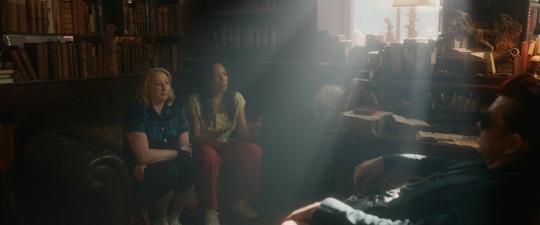
The close-ups published after S2 release are legible enough to refer us to a much more prominent historical figure, Josiah Wedgwood (1730 – 1795) — an English potter, entrepreneur and abolitionist. Founding the Wedgwood company in 1759, he developed improved pottery bodies by systematic experimentation, and was the leader in the industrialisation of the manufacture of European pottery.
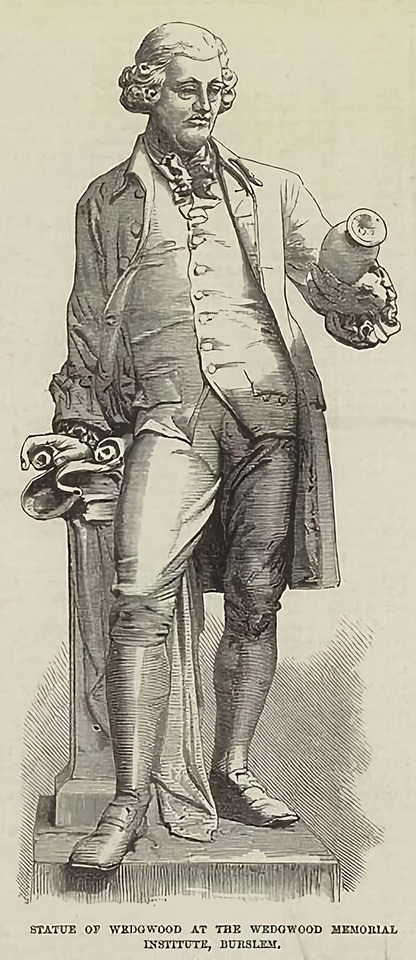
Long story short, I transcribed the handwritten pages abandoned on Aziraphale’s desk, found out the source and the full text of what could be identified as Wedgwood’s last will and testament, took a walk to visit his Soho workshop, and proceeded to write a lengthy meta analysis about it.
I was today’s years old when I realized that there’s something else connecting those two dead British men.
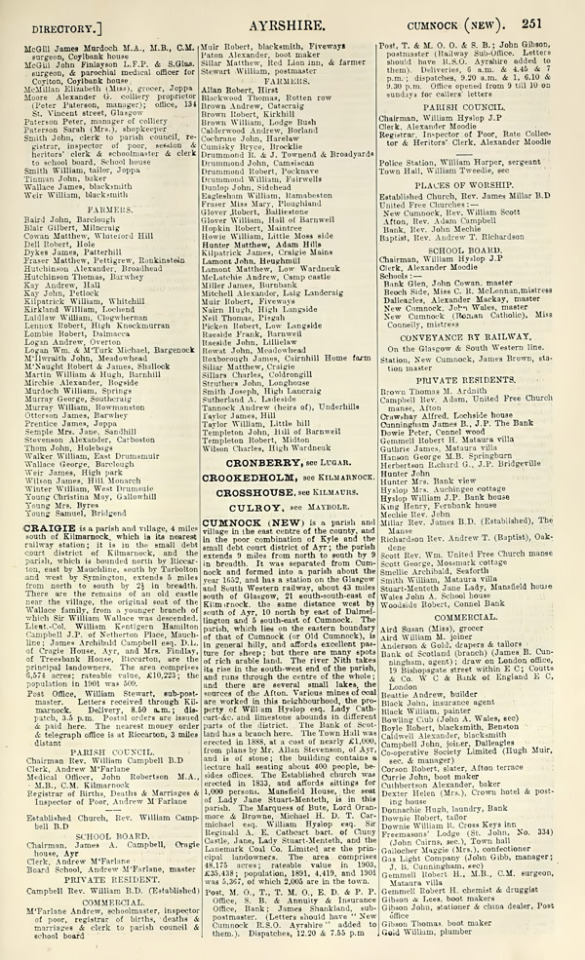

The Scottish Post Office Directory of 1903 recorded John Gibson from New Cumnock as a “stationer and china dealer” (above) operating from the shop located in the town’s post office building.
Indeed, a close look at his post office shop window in the Henderson Building (below, bottom left) reveals an artful display of fine china and pottery next to postcards printed by Gibson.

There are multiple ways to connect this surprising link with possible S3 plot points, obviously, but it’s getting late, so let’s just name the two most important ones.
You’ve probably heard of the Holy Grail, maybe from Monty Python or Good Omens S01E03 1941 flashback. Depending on the version of the story, if can be a cup, a chalice, a bowl, or a saucer — but almost always a dish or a vessel connected personally, physically and metaphysically to Jesus (unless you’re partial to Wolfram von Eschenbach’s idea that the Grail was a stone, the sanctuary of the neutral angels who took neither side during Lucifer's rebellion).

A slightly more obscure dish related to the Son of God appears in the sixteenth chapter of the Book of Revelation as a vital part of His Second Coming. The Seven Bowls (or cups, or vials) of God’s Wrath are supposed to be poured out on the wicked and the followers of the Antichrist by seven angels:
Then I heard a loud voice from the temple telling the seven angels, “Go and pour out on the earth the seven bowls of the wrath of God.” So the first angel went and poured out his bowl on the earth, and harmful and painful sores came upon the people who bore the mark of the beast and worshiped its image.
The second angel poured out his bowl into the sea, and it became like the blood of a corpse, and every living thing died that was in the sea.
The third angel poured out his bowl into the rivers and the springs of water, and they became blood. And I heard the angel in charge of the waters say, “Just are you, O Holy One, who is and who was, for you brought these judgments. For they have shed the blood of saints and prophets, and you have given them blood to drink. It is what they deserve!” And I heard the altar saying, “Yes, Lord God the Almighty, true and just are your judgments!”
The fourth angel poured out his bowl on the sun, and it was allowed to scorch people with fire. They were scorched by the fierce heat, and they cursed the name of God who had power over these plagues. They did not repent and give him glory.
The fifth angel poured out his bowl on the throne of the beast, and its kingdom was plunged into darkness. People gnawed their tongues in anguish and cursed the God of heaven for their pain and sores. They did not repent of their deeds.
The sixth angel poured out his bowl on the great river Euphrates, and its water was dried up, to prepare the way for the kings from the east. And I saw, coming out of the mouth of the dragon and out of the mouth of the beast and out of the mouth of the false prophet, three unclean spirits like frogs. For they are demonic spirits, performing signs, who go abroad to the kings of the whole world, to assemble them for battle on the great day of God the Almighty. (“Behold, I am coming like a thief! Blessed is the one who stays awake, keeping his garments on, that he may not go about naked and be seen exposed!”) And they assembled them at the place that in Hebrew is called Armageddon.
The seventh angel poured out his bowl into the air, and a loud voice came out of the temple, from the throne, saying, “It is done!” And there were flashes of lightning, rumblings, peals of thunder, and a great earthquake such as there had never been since man was on the earth, so great was that earthquake. The great city was split into three parts, and the cities of the nations fell, and God remembered Babylon the great, to make her drain the cup of the wine of the fury of his wrath. And every island fled away, and no mountains were to be found. And great hailstones, about one hundred pounds each, fell from heaven on people; and they cursed God for the plague of the hail, because the plague was so severe.

#good omens#good omens meta#good omens analysis#aziraphale#aziraphale’s bookshop#set design#good omens props#the good omens crew is unhinged#john gibson#josiah wedgwood#fine china#pottery#holy grail#seven bowls#second coming#yuri is doing her thing
86 notes
·
View notes
Note
hi! do you have any information on how hanfu were traditionally washed and stored? thank you :)
First, sorry that it has been so long. Then, sorry that it is a short answer. Hope it is alright.
Expensive clothes were not washed. In the old days they used a lot of plant dyes and those things discoloured when they came in contact with water. Modern plant dyes are slightly better due to the fixative used in dying but the colour still faded with every wash. Hence, people in the old days used to wear layers to avoid dirtied their fancy clothes with sweat.
Clothes can be scented with something called 熏笼/Xūnlóng (lit. "smoke cage").

It is usually made from bamboo, but rich people could have them made from porcelain, like this one from the Three Kingdoms period.

A book on incense from the Song dynasty, 洪氏香谱/Hóng shì xiāngpǔ (Hong's Book of Fragrance), recorded the method of scenting clothes: first placed a bowl of hot water to moisturize the clothes, then smoke the clothes with incense.
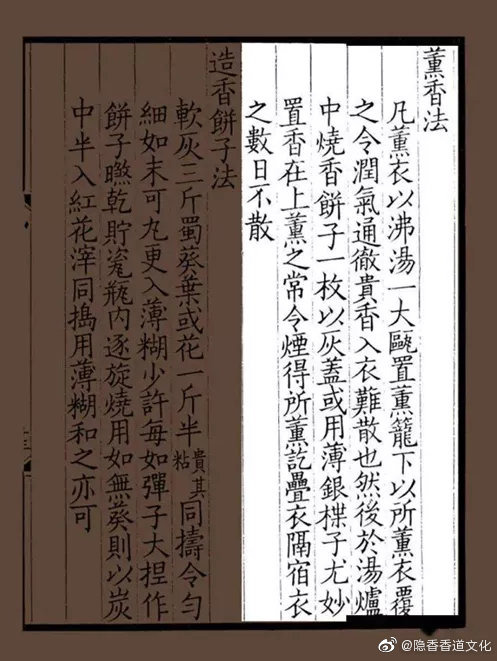
Sometimes clothes could be washed separately.
护领/Hùlǐng (lit. "Collar protector". They are usually white in colour) were often detachable so people only needed to wash that instead of the whole clothes. It could also be made from paper.
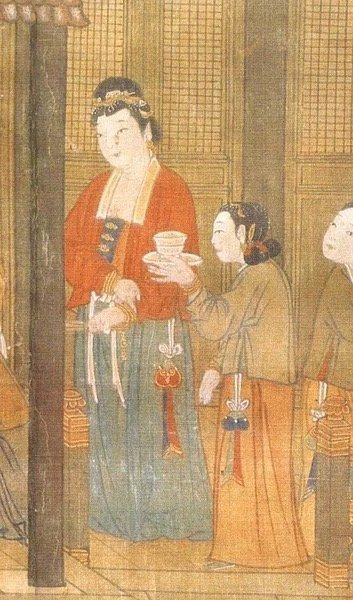
Those type of embroidered/painted collars from Song dynasty were attached separately, so it was possible that they were removed while the body of the clothes were washed separately.
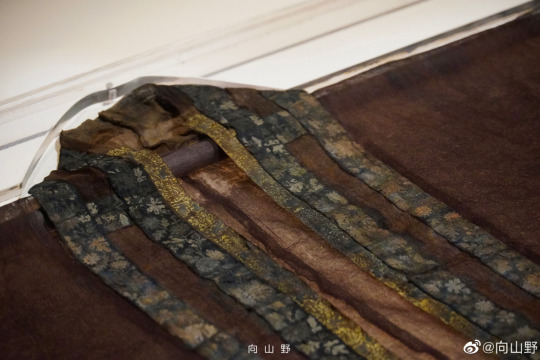
People usually washed clothes in water with the aid of a 捣衣杵/dǎoyī chǔ or 洗衣杵/xǐyī chǔ 搓衣板/cuō yī bǎn wash stick and/or a washboard.

The earliest type of of soap recorded being used was 草木灰/cǎomù huī (wood ash). Other plant based soaps were also used, such as 皂荚/zàojiá (Gleditsia sinensis, black locust), 无患子/wúhuànzi (Sapindus saponaria, soapberries), 茶箍/chágū(the dregs from pressing oil from camellia seeds plus hay) etc.

There were also records of potassium soap. Those soaps however were usually in liquid form and often used in fabric manufacture [我国古代的洗涤剂].
猪胰子/Zhū yízi Pig pancreas was also used. 白国斌/Bái Guóbīn (in 2021) wrote how they made pig pancreas soap when he was young - pasted the pig pancreas, then dried and powdered it. Later mix with alkaline water and made into ball to air dry.
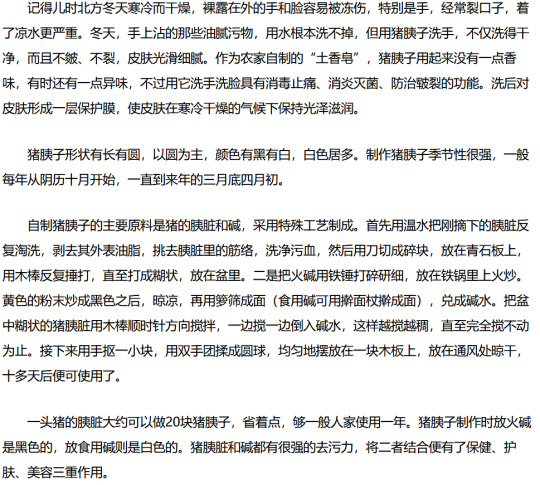
澡豆/Zǎodòu was made from the combination of powdered pig pancreas, bean powder and other herbs. There are many recipes, such as a recipe by 孙思邈/Sūn Sīmiǎo from Tang dynasty includes 16 materials. They were also known as 胰子/Yízi.
Aromatic herbs and other xiang (fragrant things) could also be added into the water in the end to add pleasant fragrance to the clothes, such as a book in Ming dynasty《多能鄙事》/Duō néng bǐ shì ("I can do a lot of humble things") by 刘基/Liú jī recorded: Tree Peony Bark 31.25g and Spikenard 3.125g, powdered.
#chinese history#hanfu#china#historical clothing#laundry#fouryearsofshades#long post#my ask box is finally cleared#i am free
862 notes
·
View notes
Text
10 Thrifting tips the thrilling continuation
I am a dedicated thrifter and I have done a few thrifting tips posts, things to look for, how to find the best stuff. I had an excellent day thrifting today and decided it was a good day to polish up a draft I had and post it. So read more for tips to get the goodies.
If you buy fairly plain wooden furniture, it doesn’t take a whole lot of expertise to refinish it. You can get a cheap palm sander for less than 50 bucks, and a small tin of furniture wax goes a long, long, loooong way. Or you can get Danish oil if you want a satin finish or Teak oil for a gloss finish. Don’t let Youtube videos make you believe you have to test out 10 zillion different coloured stains unless you are aiming for a very specific look. Just make sure you slap something nourishing on the wood after you’ve sanded it. Also remember that whatever product you use; multiple light coats will come out better than one thick coat. There’s a huge amount of satisfaction in looking at a gorgeous chunk of wood you’ve bought back to life.
French milled/triple milled soap. Old ladies like to give soap as gifts and people tend to stick it in their drawer to scent their clothes and never actually use it, eventually they have a clean out and this unused soap goes to the thrift store still in it’s original paper wrapping. This soap is expensive. This soap is fantastic. The milling process creates a very different product than the bars you get at the supermarket. It doesn’t go goopy and melty even if you leave it sitting in a puddle in your shower, it’s not as drying to your skin, the scent stays on your skin for longer. These bars last for months, it’s well worth picking them up if you like the scent.
Blue Willow. Would you like to have a nice set of china but don’t want to drop a lot of money on something that might look dated in 10 years? Collect blue willow from thrift stores. Blue willow has been around for hundreds of years and it’s going to be around for hundreds more. It can be slotted in to almost any home style, classical, boho, maximalist, scandi, etc, etc. Because it’s been around for so long pretty much every manufacturer has done it, so you find it really often at thrift stores and it’s easy to pick up a couple of plates here and a serving bowl there. Also, because so many companies have done it over such a long period it’s possible to pick up modern dishwasher safe dinner plates that you can use alongside a lovely 100-year-old antique gravy boat.
Gifts. Never feel ashamed of buying gifts from thrift stores. The perfect vintage item is way more meaningful than any amount of new stuff. And if you’re buying for someone who doesn’t like vintage; if something looks new and undamaged how is the recipient going to know that it’s not new?
Get yourself a thrifting routine. You’re gonna find the best stuff if you go often so don’t just randomly go every now and then. People who say they never find anything are the ones who only call into a thrift store every couple of months and expect something amazing to just drop into their lap. Set a day once a week, or every other week or once a month, but make a commitment to go on a regular basis.
If you see something that you think you like but you’re not 100% sure, as long as you can afford it and have a place for it, get the thing. Take it home, live with it. Maybe you’ll decide you don’t really like it and take it back to the thrift store and consider the price you paid a charitable donation. But sometimes you bring something home that you kinda like and end up absolutely loving it. Some of my favourite things in my house are things I wasn’t completely sure about when I was in the thrift store. There’s nothing worse than the regret of leaving something behind because you weren’t sure about it, then deciding actually I do want that thing, but it’s gone, and you’ll never find another quite like it.
If possible, go with someone who knows your likes/tastes. It’s amazing the number of times I’ve been in a thrift store with my mother or best friend, and they’ve found something I love that I hadn’t even noticed. Plus they’ll be dirty rotten enablers and encourage you to buy the thing that you love but you’re not sure you can justify to yourself.
There are a bunch of Youtubers who do thrift flips. If there’s some décor item that’s in all the stores at the moment and you love it, but can’t justify spending money on it, then it might be worth looking up to see if anyone has done a thrift flip and can give you a tutorial on how to turn a thrifted item into the hot décor items of your dreams.
Keep the cycle going. If you have stuff in your home that you no longer use/love, then donate it. If you’ve traded up and found something better but your original thing still has life in it, donate. Even if you originally bought something from a thrift store no one is gonna be mad if you send it right on back (unless you’ve used it to death, and it really should be heading for landfill).
Don’t put yourself in a box. Don’t refuse to get something because it’s not ‘your style’. What is ‘your style’? Things that you love, that make you happy. Do you love this thing? Does it make you smile? Then it’s your style. Honestly style is something that evolves organically, that grows and expands as we’re exposed to new things. If you try to follow a certain style rigidly then you’ll end up with a home that looks boring and cookie-cutter. Throw in something unexpected that speaks to you. Then throw in another of those things and another and another and pretty soon you’ll end up with a home that actually is your style – maybe you just don’t know what your style really is yet. I think of myself as very confident in my style, but I’m constantly stumbling across new things that I didn’t know I needed in my life.
Part 1
Part 2
Part 3
322 notes
·
View notes
Text
Between the Three of Us
Marco x afab!Reader x Shanks
CW: omegaverse elements (it is such a small part of the story I almost hesitate to mention it), violence, group sex, sex, swearing, it's a noir detective AU I'm sorry I really don't know what else to say.
Summary: A One Piece Noir Detective AU x reader story
You've stolen the treasure of the century - a puzzle orb that's a map to Gol D Roger's treasure. But the map itself has some secrets, and so do you. Pursued by the Mafia family that hired you to steal the orb you find yourself in Feathered Talon - an agency of freelance detectives with connections across the island - and the Grandline.
Are Shanks and Marco your unexpected saviors? Or will you be betrayed yet again, and handed over to the iron will of Absolute Justice - the mafia family in control of the Grandline?



Chapter 1: Caught
The whole thing had been simple.
Break into a heavily fortified, World Government subsidized museum and steal its crowning jewel - Roger’s map to the One Piece. Get in, get the goods, get out. It had been meticulously planned, and the plan had been rehearsed dozens of times.
Your benefactors had money to spare on such an endeavor, and the treasure that Roger’s map led to, was rumored to be incomprehensible in value. Gold and jewels aside, he had found the One Piece, and while many believed he had tossed the accursed item into the depths of the ocean, your client seemed to believe it was all still in his cache.
Gol D Roger - treasure hunter to some, gentleman thief to others. He had retired some years after finding the One Piece and had become a sort of Legendary Detective, along with a few people from his original crew.
The government had never been able to pin him with actual proof of law breaking, and so his agency had been legit. He went from having the government as an enemy to having the government and the mafia families as enemies, and yet at the same time there were strange alliances mixed all up in it.
Disease and bad luck had been the end of his days, but to so many people he was practically a god. A miracle of a man who had lived his life to its fullest with nothing to apologize for.
You had a solid appreciation for Roger yourself, avid inner city treasure hunter that you were. Little less appreciation for him turning his coat to the side of the law, but being a free lance detective was a far cry from being a government dog, so it was forgivable.
Roger and his past wasn’t your problem right now.
The job had gone off flawlessly. So flawlessly you’d had extra time to spare in the museum before you had to leave and came upon an interesting discovery. The map wasn’t just a map.
About the size of a bowling ball, but unbelievably lighter, the brass orb with its lines and circles was believed to be a sea chart. Coat it in ink, roll it out on paper and it would provide you a course.
Provided, of course, you knew the correct way to roll it out, and how to set it before inking it.
The orb’s surface shifted seamlessly. The craftsmanship was completely beyond anything anyone could manufacture nowadays. Whatever ancient genius had made it before was still eons ahead of his time, but what that meant was that the orb had an innumerable number of settings.
In this sense you could use it to navigate the entire world. As long as you knew how to set the surface of it, it could get you anywhere. But that also meant, if you didn’t already know how to get somewhere you couldn’t set the surface correctly, and in this way it became a museum piece, instead of the pride and joy of the world government.
You weren’t stupid. You weren’t, perhaps, wise, but you were really good at puzzles. Especially spatial ones. You were also good at languages and pattern recognition, but that was a facet of dumb luck. You had an eidetic memory, more photographic than auditory, but your brain was a one way trap for information, bypassing your short term memory in record time and becoming an easily accessible long term memory immediately.
You didn’t always know what to do with the information you gobbled up, but you always had it.
Most of the time you transcribed things and sent them to Ohara, or sold them to information brokers to pay your rent. It was a gift you kept separate from your working identity - if people knew you were practically a walking camera, they wouldn’t do business with you.
But right now your knack for puzzles and your gift were coming together. Without really thinking about the consequences, you whirled and snapped the orb into a frenzy, stopping all the parts where you wanted them.
The small orb lined up perfectly as a map of the world, one island raised ever so slightly above the rest. You ran your thumb over it, applying just the barest hint of pressure and the little island shifted and dropped, with a satisfying click.
An invisible seam along the redline parted, letting you open the orb into two halves. You knew, as soon as you saw it you knew what you were looking at, but the gravity of it was enough to make you bring the two halves together again. A few turns, a couple twists, and the orb was back as you had found it.
You left the museum, mind reeling with possibilities. Your only immediate option was to finish the job. Hand off the orb, take your payment, and be done.
But the hand off had gone bad. Your presence was requested, the people around you knew what you could do in unsettling detail, and your job wasn’t over. The night went from robbery to attempted kidnapping.
You had slipped the grasp of those around you, nicked the orb, and bolted. The two things on your side were your own skills - what made you a good thief, made you a good runner, and second to that they needed you alive.
Wanted you alive, at the least.
The short-ranged stun guns missed their mark, and the longer-range guns couldn’t risk killing you, and so the small scuffle turned into a city-wide chase. The deep hours of the night turned into the wee hours of the morning, and you had lost your pursuers a few times.
As good as you were at shaking them, they were skilled at tightening the net. You needed to get off the streets before-
The crack in the air of a muffled gunshot followed the force of impact as it slammed into your shoulder. Searing pain followed as your mind caught up with the facts, and you nearly toppled before you broke into a mad dash.
When your legs moved, your arms moved. When your arms moved your shoulder screamed. You only had the orb under control because you’d stolen someone’s shoulder bag earlier, trying to snag a collection of items in an attempt to disguise yourself and change out your clothes.
You were beginning to suspect that your gear had been tagged, but everything you’d been able to check was clean, and everything you couldn’t be sure about had been swapped out. Maybe that’s why you were being shot at now - better to risk it than to let you slip away.
It didn’t matter, your problem, and its resolution were still the same: you had to get off the streets.
You took a few errant turns and ended up almost in a courtyard of sorts. There wasn’t any grass, it was a concrete lot and a sidewalk, but the business front didn’t face a street. Just the interior of the little open area. There were a couple of alleys that came into this, and one driveway just large enough for a vehicle. There was a garage, a wheelchair lift, and a set of stairs up to what looked like the main way in.
Pulling out your lockpick you zipped up the concrete and metal stairs as quick and quiet as you could, relieved to find they were solid, sturdy, and silent. You rammed your custom tool into the lock, effectively breaking it, you didn’t have time to be gentle, and stepped in, closing the door swiftly and quietly.
You leaned against the wall, straining to hear outside and letting your eyes adjust to the interior inside. There were a few desks, but the office space was pretty open. The sign outside had been enlightening enough.
Feathered Talon, Detective Agency, at your service.
Feathered Talon. Sounded like a talisman of some sort. Mythical creature. Useless romanticism, you were sure. You didn’t hear any ruckus outside, and a few fleeting glances through the slats of the blinds didn’t show any movement.
Stepping into the office, you took a better look around. The place wasn’t just set up for business, it was set up for living. There was a kitchen down one hall, a daybed against the wall, out of the way of the rest of the needs for a kitchen. A half-bath nearby, and probably a full bath further down the hall. This one looked like it was more for clients to use than it was for whoever lived here.
Lived. Humph. You’d just have to be quiet while you assessed your damage and dodged your persistent pursuers.
You set your bag down beside the sink counter, and pulled down the collar of your stolen shirt. The soft light of a nightlight by the sink was as much light as you were allowing yourself, but at least it gave you a better look at your current problem.
No exit wound. The bullet was still inside your shoulder, probably lodged right against your scapula, if you had to take a terribly uneducated guess. You didn’t have a second mirror, and you couldn’t move enough to look at your back – the pain in your shoulder was simply too bad.
You took a few deep breaths, letting them out slowly, calming yourself and focusing on your own body for a moment. There wasn’t a sensation of blood running down your back, so you weren’t in danger of bleeding out, but the slug couldn’t stay. You couldn’t get it out, not right now. All you could hope was that you could stay out of sight long enough to make it to the Public Defenders – a kind of wild bunch who had the sort of connections, and did the sort of work you needed right now.
“I can stitch that.” The sound of the voice hit your ears and your body moved. You shifted further into the small bathroom, little more than a penknife in your good hand, eyes focused on a tall man standing in the doorway.
He takes a step back, putting his hands up. He’s trying not to look intimidating, but he’s nearly seven feet tall, and the tattoo across his chest looks a little familiar even in the dim light.
“Rough night, yoi?” He half asks, half states, and he looks down the hall just before you hear the sound as well. There’s a ruckus in the courtyard. Nothing serious, the sounds of a lot of boots and talking. He looks back at you and you look at him, and there’s a quiet understanding between you.
“How’d you get in?” His voice is soft, just above a whisper.
“… Broke the lock.”
“Not the window?”
You shake your head. “Internal break. No one should be able to tell from looking.”
A smile crosses his face, and he relaxes more. “Smart. Who is it?” He questions, inclining his head down the hall.
“B… Boss Akainu’s men.” You admit hesitantly.
“Absolute Justice?” He nearly hisses the question, leaving you in the bathroom and heading toward the front door.
You gather your things, pulling the shoulder bag snug against yourself as you step down the hall a little, listening in to whatever’s happening. If this blonde is going to sell you out, you at least want the chance to outrun him. The entrance to this place might be in an interior courtyard, but one of the other windows could face the street.
You could hear the tall man saying something out into the courtyard. You weren’t entirely sure what it was, but he sounded like he was angry at the people making all the noise – as though he was playing things off like they’d ruined his sleep, and not like he was trying to give you over to them.
Still, you’d put him, and this agency, at enough risk. It was better if you left than get them involved too deeply. Especially since, so far, they seemed like nice enough people.
Turning away from the front door you go down the hall and find a room with an open door. Peeking in you don’t see or hear anyone inside, but it’d be hard to see anything – there’s no window. You furrow your brow and step back out into the hallway.
The small hairs on the back of your neck stand on end, and you feel a cold bead of sweat slide down your spine. Something causes your stomach to knot, and you can’t even register the pain in your shoulder from the unsettled feeling that’s fallen over you. You want to run, but you don’t know if the hallway is a dead end, or if it wraps back around to the office areas.
You swallow hard, forcing yourself to look down the hall toward the source of the feeling that’s screaming for your body to run.
A man is leaned against the wall. He looks calm and relaxed, an easy smile on his lips and hooded brown eyes regarding you in the dim light of the hall, but the façade isn’t fooling you. He’s a dangerous man, and every fiber in your body is telling you to run, but you already know you’d never outpace him.
“Leaving so soon?” His voice is certainly disarming, you’ll give him that much. Speaking of disarming he seems to be missing most of one.
“I… wasn’t exactly invited in the first place.” You reply as evenly as you can. “I thought it best to make use of his distraction and, um, not impose further.” You take a step back, but you can already feel someone behind you.
“Let me patch that shoulder.” The familiar voice behind you says. “We’re going to be more discreet than the hospital, at least.”
Your eyes are on the man in front of you. Some part of you has determined he’s the more dangerous one, though you’re effectively surrounded. It doesn’t matter who you kept your eyes on.
“I don’t have any money on me.” It’s kind of a last-ditch attempt. You’ve already realized these two mean to keep you here, one way or another. They’re just being polite about it.
“A good story has quite the value.” The red-head says, taking a drink from a bottle you didn’t even realize he was holding. Water, wine, or poison, the sharp look in his eyes was proof enough he wasn’t phased by whatever was in the container. “I’m sure your story will be worth the patch job.”
You turn toward the man behind you, and the blonde looks down at you with an equally genuine smile. Your shoulders drop, and the action reminds you that you have a bullet lodged in it. Almost nothing about this evening has gone as expected, or as you had hoped, and you weren’t yet sure if this was your luck turning, or staying the course.
“I am… in your care, it seems.”
#Between the Three of Us#x reader#reader insert#marco the phoenix#red haired shanks#portgas d ace#benn beckman
43 notes
·
View notes
Text
Disposable Paper Bowl - Paper Bowl Manufacturer - Carma Paper Cup

Discover custom Disposable Paper Bowl at Carma Paper Cups. Contact us for best options, and unique designs. We are the best paper bowl manufacturer in Morbi.
0 notes
Text
Paper Boxes In India - Ishwara
Looking for high-quality paper boxes in India? Look no further than Ishwara We specialize in crafting premium paper boxes that are not only durable but also visually appealing. Whether you need boxes for packaging, storage, or gifting purposes, our team of skilled craftsmen can create customized solutions to suit your requirements. Trust Ishwara for all your paper box needs in India and experience top-notch quality and excellent customer service.

#disposable food containers#paper boxes in india#ishwara#paper boxes in noida#paper food containers#disposable paper cups manufacturer#disposable paper products#paper cups in india#best paper container online#paper bowls in india
0 notes
Text
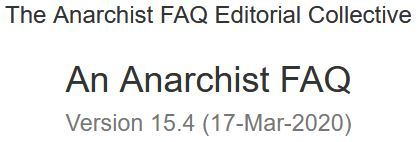
Bibliography for FAQ
Non-Anarchist Works
Adams, Arthur E., Bolsheviks in the Ukraine: the second campaign, 1918–1919, Yale University Press, New Haven, 1963
Anderson, Terry L. and Leal, Donald R., Free Market Environmentalism, Pacific Research Institute for Public Policy,San Francisco, 1991.
Anweiler, Oskar, The Soviets: The Russian Workers, Peasants, and Soldiers Councils 1905–1921, Random House, New York, 1974.
Archer, Abraham (ed.), The Mensheviks in the Russian Revolution, Thames and Hudson Ltd, London, 1976.
Arestis, Philip, The Post-Keynesian Approach to Economics: An Alternative Analysis of Economic Theory and Policy, Edward Elgar Publishing Ltd., Aldershot, 1992.
Armstrong, Philip, Glyn, Andrew and Harrison, John, Capitalism Since World War II: The making and breakup of the great boom, Fontana, London, 1984.
Capitalism Since 1945, Basil Blackwell, Oxford, 1991.
Arrow, Kenneth, “Economic Welfare and the Allocation of Resources for Inventiveness,” in National Bureau of Economic Research, The Rate and Direction of Inventive Activity, Princeton University Press, 1962.
Aves, Jonathan, Workers Against Lenin: Labour Protest and the Bolshevik Dictatorship, Tauris Academic Studies, London, 1996.
Bain, J.S., Barriers in New Competition: Their Character and Consequences in Manufacturing Industries, Harvard University Press, Cambridge, 1967.
Bakan, Joel, The Corporation: The Pathological Pursuit of Profit and Power, Constable, London, 2004.
Bakunin, Michael, The Confession of Mikhail Bakunin, Cornell University Press, Ithaca, N.Y., 1977.
Bukharin, Nikolai, Economy Theory of the Leisure Class, Monthly PressReview, New York/London, 1972.
Bagdikian, Ben H., The New Media Monopoly, Beacon Press, Boston, 2004.
Baldwin, William L., Market Power, Competition and Anti-Trust Policy, Irwin, Homewood, Illinois, 1987.
Balogh, Thomas, The Irrelevance of Conventional Economics,Weidenfield and Nicolson, London, 1982.
Baran, Paul A. and Sweezy, Paul M., Monopoly Capital, Monthly Press Review, New York, 1966.
Baron, Samuel H., Plekhanov: the Father of Russian Marxism, Routledge & K. Paul, London, 1963
Barry, Brian, “The Continuing Relevance of Socialism”, in Thatcherism, Robert Skidelsky (ed.), Chatto & Windus, London, 1988.
Beder, Sharon, Global Spin: The Corporate Assault on Environmentalism, Green Books, Dartington, 1997.
Beevor, Antony, The Spanish Civil War, Cassell, London, 1999.
The Battle for Spain: The Spanish Civil War 1936–1939, Phoenix, London, 2006.
Berghahn, V. R., Modern Germany: society, economy and politics in the twentieth century, 2nd ed., Cambridge University Press, Cambridge, 1987.
Berlin, Isaiah, Four Essays on Liberty, Oxford University Press, Oxford, 1969.
Bernstein, Michael A., The Great Depression: Delayed recovery and Economic Change in America, 1929–1939, Cambridge University Press, New York, 1987.
Beynon, Huw, Working for Ford, Penguin Education, London, 1973.
Binns, Peter, Cliff, Tony, and Harman, Chris, Russia: From Workers’ State to State Capitalism, Bookmarks, London, 1987.
Blanchflower, David and Oswald, Andrew, The Wage Curve, MIT Press, Cambridge, Mass., 1994.
Blinder, Alan S. (ed.), Paying for productivity: a look at the evidence, Brookings Institution, Washington, D.C, 1990.
Blum, William, Killing Hope: US Military and CIA Interventions Since World War II, 2nd edition, Zed Books, London, 2003.
Rogue State: A Guide to the World’s Only Superpower, 3rd edition, Zed Books, London, 2006.
Böhm-Bawerk, Eugen, Capital and Interest, Libertarian Press, South Holland,Ill., 1959.
Bolloten, Burnett, The Spanish Civil War: Revolution and Counter Revolution, Harvester-Wheatsheaf, New York, 1991.
Boucher, Douglas H. (ed.), The Biology of Mutualism: Biology and Evolution, Croom Helm , London, 1985.
Bourne, Randolph, Untimely Papers, B.W. Huebsch, New York, 1919.
War and the Intellectuals: Essays by Randolph S. Bourne 1915–1919, Harper Torchbooks, New York, 1964.
Bowles, Samuel and Edwards, Richard (Eds.), Radical Political Economy, (two volumes), Edward Elgar Publishing Ltd., Aldershot, 1990.
Bowles, Samuel and Gintis, Hebert, Schooling in Capitalist America: Education Reform and the Contradictions of Economic Life, Routledge & Kegan Paul, London, 1976.
Braverman, Harry, Labour and Monopoly Capital: The Degradation of Work in theTwentieth Century, Monthly Review Press, New York, 1974.
Brecher, Jeremy, Strike!, South End Press, Boston, 1972.
Brecher, Jeremy and Costello, Tim, Common Sense for Hard Times, Black Rose Books, Montreal, 1979.
Brenan, Gerald, The Spanish Labyrinth: An Account of the Social and Political of the Spanish Civil War, 2nd Edition, Cambridge University Press, Cambridge, 1976.
Broido, Vera, Lenin and the Mensheviks: The Persecution of Socialists under Bolshevism, Gower Publishing Company Limited, Aldershot, 1987.
Brovkin, Vladimir N., From Behind the Front Lines of the Civil War: political parties and social movements in Russia, 1918–1922, Princeton University Press, Princeton, N.J, 1994.
The Mensheviks After October: Socialist Opposition and the Rise of the Bolshevik Dictatorship, Cornell University Press, Ithaca, 1987. Russia after Lenin : politics, culture and society, 1921–1929, Routledge, London/New York, 1998
Brovkin, Vladimir N. (ed.), The Bolsheviks in Russian Society: The Revolution and Civil Wars, Yale University Press, New Haven and London, 1997.
Bunyan, James, The Origin of Forced Labor in the Soviet State, 1917–1921: Documents and Materials, Johns Hopkins University Press, Baltimore, 1967.
Byock, Jesse, Viking Age Iceland, Penguin Books, London, 2001
C.P.S.U. (B), History of the Communist Party of the Soviet Union (Bolsheviks), International Publishers, New York, 1939.
Cahm, Eric and Fisera, Vladimir Claude (eds), Socialism and Nationalism, Spokesman, Nottingham, 1978–80.
Carr, Edward Hallett, The Bolshevik Revolution: 1917–1923, in three volumes, Pelican Books, 1966.
The Interregnum 1923–1924, Penguin, Harmondsworth, 1969.
Carr, Raymond, Spain: 1808–1975, 2nd Edition, Clarendon Press, Oxford, 1982.
Carrier, James G. (ed.), Meanings of the market: the free market in western culture, Berg, Oxford, 1997.
Chandler, Lester V., America’s Greatest Depression, 1929–1941, Harper & Row, New York/London, 1970.
Chang, Ha-Joon, Kicking Away the Ladder: Development Strategy in Historic Perspective, Anthem Press, London, 2002.
Bad samaritans: rich nations, poor policies and the threat to the developing world, Random House Business, London, 2007
Clark, J.B., The Distribution of Wealth: A theory of wages, interest and profits, Macmillan, New York, 1927
Cliff, Tony, Lenin: The Revolution Besieged, vol. 3, Pluto Press, London,1978.
Lenin: All Power to the Soviets, vol. 2, Pluto Press, London,1976. State Capitalism in Russia, Bookmarks, London, 1988. “Trotsky on Substitutionism”, contained in Tony Cliff, Duncan Hallas, Chris Harman and Leon Trotsky, Party and Class,Bookmarks, London, 1996. Trotsky, vol. 3, Bookmarks, London, 1991. Revolution Besieged: Lenin 1917–1923, Bookmarks, London, 1987.
Cohen, Stephan F., Bukharin and the Bolshevik Revolution, Oxford University Press, London, 1980.
“In Praise of War Communism: Bukharin’s The Economics of the Transition Period”, pp. 192–203, Revolution and politics in Russia: essays in memory of B.I. Nicolaevsky, Alexander and Janet Rabinowitch with Ladis K.D. Kristof (eds.).
Collins, Joseph and Lear, John, Chile’s Free-Market Miracle: A Second Look,Institute for Food and Development Policy, Oakland, 1995.
Communist International, Proceedings and Documents of the Second Congress1920, (in two volumes), Pathfinder, New York, 1991.
Confino, Michael (ed.), Daughter of a Revolutionary: Natalie Herzen and the Bakunin-Nechayev Circle, Library Press, LaSalle Illinois, 1973.
Cowen, Tyler, “Law as a Public Good: The Economics of Anarchy”,Economics and Philosophy, no. 8 (1992), pp. 249–267.
“Rejoinder to David Friedman on the Economics of Anarchy”, Economics and Philosophy, no. 10 (1994), pp. 329–332.
Cowling, Keith, Monopoly Capitalism, MacMillian, London, 1982.
Cowling, Keith and Sugden, Roger, Transnational Monopoly Capitalism,Wheatshelf Books, Sussez, 1987.
Beyond Capitalism: Towards a New World Economic Order, Pinter, London, 1994.
Curry, Richard O. (ed.), Freedom at Risk: Secrecy, Censorship, and Repression in the 1980s, Temple University Press, 1988.
Curtis, Mark, Web of Deceit: Britain’s real role in the world,Vintage, London, 2003.
Unpeople: Britain’s Secret Human Rights Abuses,Vintage, London, 2004.
Daniels, Robert V., The Conscience of the Revolution: Communist Opposition in Soviet Russia, Harvard UniversityPress, Cambridge, 1960.
Daniels, Robert V. (ed.), A Documentary History of Communism, vol. 1,Vintage Books, New York, 1960.
Davidson, Paul, Controversies in Post-Keynesian Economics, E. Elgar, Brookfield, Vt., USA, 1991.
John Maynard Keynes, Palgrave Macmillan, Basingstoke, 2007
Davis, Mike, Late Victorian Holocausts: El Niño Famines and the Making of the Third World, Verso, London, 2002.
Denikin, General A., The White Armies, Jonathan Cape, London, 1930.
DeShazo, Peter, Urban Workers and Labor Unions in Chile 1902–1927,University of Wisconsin Press, Madison, 1983.
Deutscher, Isaac, The prophet unarmed : Trotsky 1921–1929, Oxford University Press, 1959.
Devine, Pat, Democracy and Economic Planning, Polity, Cambridge, 1988.
Dobbs, Maurice, Studies in Capitalist Development, Routledge & Kegan Paul Ltd., London, 1963.
Dobson, Ross V. G., Bringing the Economy Home from the Market, Black Rose Books, Montreal, 1993.
Domhoff, G. William, Who Rules America Now? A view from the ‘80s, Prentice-Hall, Englewood Cliffs, 1983.
Donaldson, Peter, A Question of Economics, Penguin Books, London, 1985.
Economics of the Real World, 3rd edition, Penguin books, London, 1984.
Dorril, Stephen and Ramsay, Robin, Smear! Wilson and the Secret State, Fourth Estate Ltd., London, 1991.
Douglass, Frederick, The Life and Writings of Frederick Douglass, vol. 2, Philip S. Foner (ed.) International Publishers, New York, 1975.
Draper, Hal, The ‘dictatorship of the proletariat’ from Marx to Lenin, Monthly Review Press, New York, 1987.
The Myth of Lenin’s “Concept of The Party”, available at: http://www.marxists.org/archive/draper/works/1990/myth/myth.htm
Du Boff, Richard B., Accumulation and Power: an economic history of the United States, M.E. Sharpe, London, 1989.
Dubois, Pierre, Sabotage in Industry, Penguin Books, London, 1979.
Eastman, Max, Since Lenin Died, Boni and Liveright, New York, 1925.
Eatwell, Roger and Wright, Anthony (eds.), Contemporary political ideologies, Pinter, London, 1993.
Edwards, Stewart, The Paris Commune 1871, Victorian (& Modern History) Book Club, Newton Abbot, 1972.
Edwards, Stewart (ed.), The Communards of Paris, 1871, Thames and Hudson, London, 1973.
Eisler, Rianne, Sacred Pleasure,
Ellerman, David P., Property and Contract in Economics: The Case forEconomic Democracy, Blackwell, Oxford, 1992.
The Democratic Worker-Owned Firm: A New Model for Eastand West, Unwin Hyman, Boston, 1990. as “J. Philmore”, The Libertarian Case for Slavery, available at: http://cog.kent.edu/lib/Philmore1/Philmore1.htm
Elliot, Larry and Atkinson, Dan, The Age of Insecurity, Verso, London, 1998.
Fantasy Island: Waking Up to the Incredible Economic, Political and Social Illusions of the Blair Legacy, Constable, London, 2007. The Gods That Failed: Now the Financial Elite have Gambled Away our Futures, Vintage Books, London, 2009.
Engler, Allan, Apostles of Greed: Capitalism and the myth of the individual in the market, Pluto Press, London, 1995.
Evans Jr., Alfred B., Soviet Marxism-Leninism: The Decline of an Ideology, Praeger, London, 1993.
Faiwel, G. R., The Intellectual Capital of Michal Kalecki: A study ineconomic theory and policy, University of Tennessee Press, 1975.
Farber, Samuel, Before Stalinism: The Rise and Fall of Soviet Democracy, Polity Press, Oxford, 1990.
Fedotoff-White, D., The Growth of the Red Army, Princeton University Press, Princeton, 1944.
Ferguson, C. E., The Neo-classical Theory of Production and Distribution, Cambridge University Press, London, 1969.
Ferro, Marc, October 1917: A social history of the Russian Revolution, Routledge & Kegan Paul, London, 1980.
Figes, Orlando, A People’s Tragedy: The Russian Revolution 1891–1924, Jonathan Cape, London, 1996.
Peasant Russia, Civil War: the Volga countryside in revolution 1917–1921, Phoenix Press, London, 2001.
Flamm, Kenneth, Creating the Computer: Government, Industry, and High Technology, The Brookings Institution, Washington D.C., 1988.
Forgacs, David (ed.), Rethinking Italian fascism: capitalism, populismand culture, Lawrence and Wishart, London, 1986.
Fraser, Ronald, Blood of Spain: the experience of civil war, 1936–1939, Allen Lane, London, 1979.
French, Marilyn, Beyond Power: On Women, Men, and Morals , Summit Books, 1985.
Frenkel-Brunswick, Else, The Authoritarian Personality,
Friedman, David, The Machinery of Freedom, Harper and Row, New York, 1973.
Friedman, Milton, Capitalism and Freedom, University of Chicago Press, Chicago, 2002.
Economic Freedom, Human Freedom, Political Freedom,available at: http://www.cbe.csueastbay.edu/~sbesc/frlect.html The Hong Kong Experiment, available at: http://www.hoover.org/publications/digest/3532186.html
Funnell, Warrick, Jupe, Robert and Andrew, Jane, In Government we Trust:Market Failure and the delusionsof privatisation, Pluto Press, London,2009.
Gaffney, Mason and Harrison, Mason, The Corruption of Economics, Shepheard-Walwyn (Publishers) Ltd., London, 1994.
Galbraith, James K., Created Unequal: The Crisis in American Pay, The Free Press, New York, 1999.
Galbraith, John Kenneth, The Essential Galbraith, Houghton Mifflin Company, New York, 2001.
The New Industrial State, 4th edition, Princeton University Press, Princeton and Oxford, 2007.
Gemie, Sharif, French Revolutions, 1815–1914, Edinburgh University Press, Edinburgh, 1999.
Getzler, Israel, Kronstadt 1917–1921: The Fate of a Soviet Democracy, Cambridge University Press, Cambridge, 1983.
Martov: A Political Biography of a Russian Social Democrat, Melbourne University Press, Carlton, 1967. “Soviets as Agents of Democratisation”, in Revolution in Russia: reassessments of 1917, Edith Rogovin Frankel, Jonathan Frankel, Baruch Knei-Paz (eds.), Cambridge University Press, Cambridge/New York, 1991. “Marxist Revolutionaries and the Dilemma of Power”, pp. 88–112, Revolution and Politics in Russia, Alexander and Janet Rabinowitch with Ladis K.D. Kristof (eds.)
Gilmour, Ian, Dancing with Dogma, Britain Under Thatcherism, Simon and Schuster, London, 1992.
Glennerster, Howard and Midgley, James (eds.), The Radical Right and the Welfare State:an international assessment, Harvester Wheatsheaf,1991.
Gluckstein, Donny, The Tragedy of Bukharin, Pluto Press, London, 1994
The Paris Commune: A Revolutionary Democracy, Bookmarks,London, 2006
Glyn, Andrew, Capitalism Unleashed: Finance Globalisation and Welfare,Oxford University Press, Oxford, 2006.
Glyn, Andrew and Miliband, David (eds.), Paying for Inequality: The Economic Costs of Social Injustice, IPPR/Rivers Oram Press, London, 1994.
Goodstein, Phil H., The Theory of the General Strike from the French Revolution to Poland, East European Monographs, Boulder, 1984.
Gould, Stephan Jay, Ever Since Darwin: Reflections in Natural History,Penguin Books, London, 1991.
Bully for Brontosaurus: Reflections in Natural History, Hutchinson Radius, London, 1991.
Gramsci, Antonio, Selections from Political Writings (1921–1926), Lawrence and Wishart, London, 1978.
Grant, Ted, The Unbroken Thread: The Development of Trotskyism over 40 Years, Fortress Publications, London, 1989.
Russia from revolution to counter-revolution available at https://www.marxist.com/russia-from-revolution-to-counter-revolution.htm
Gray, John, False Dawn: The Delusions of Global Capitalism, Granta Books, London, 1998.
Green, Duncan, Silent Revolution: The Rise of Market Economics in Latin America, Cassell, London, 1995.
Greider, William, One World, Ready or Not: The Manic Logic of Global Capitalism, Penguin Books, London, 1997.
Gross, Bertram, Friendly Fascism, South End Press, Boston, 1989.
Gunn, Christopher Eaton, Workers’ Self-Management in the United States, Cornell University Press, Ithaca and London, 1984.
Gunson, P., Thompson, A. and Chamberlain, G., The Dictionary of Contemporary Politics of South America, Routledge, 1989.
Hahnel, Robin and Albert, Michael, The Quiet Revolution in Welfare Economics, Princeton University Press, Princeton, 1990.
The Political Economu of Participatory Economics, Princeton University Press, Princeton, 1991. Looking Forward: Participatory Economics for the Twenty First Century, South End Press, Boston, 1991.
Hallas, Duncan, The Comintern, Bookmarks, London, 1985.
“Towards a revolutionary socialist party”, contained inTony Cliff, Duncan Hallas, Chris Harman and Leon Trotsky,Party and Class, Bookmarks, London, 1996.
Harding, Neil, Leninism, MacMillan Press, London, 1996.
Lenin’s political thought, vol. 1, Macmillan, London, 1977.
Harman, Chris, Bureaucracy and Revolution in Eastern Europe, Pluto Press, London, 1974.
“Party and Class”, contained in Tony Cliff, Duncan Hallas, Chris Harman and Leon Trotsky, Party and Class,Bookmarks, London, 1996, How the revolution was lost available at: http://www.marxists.de/statecap/harman/revlost.htm
Hastrup, Kirsten, Culture and History in Medieval Iceland, Clarendon Press, Oxford, 1985.
Hatch, John B., “Labour Conflict in Moscow, 1921–1925” contained in Russia in the Era of NEP: explorations in Soviet society and culture, Fitzpatrick, Sheila, Rabinowitch, Alexander and Stites, Richard (eds.), Indiana University Press, Bloomington, 1991.
Hawkins, Howard, “Community Control, Workers’ Control and the Co-operative Commonwealth”, Society and Nature, no. 3, vol. 1, no. 3, pp. 55–85.
Haworth, Alan, Anti-Libertarianism: Markets, Philosophy and Myth, Routledge, London, 1994.
Hayek, F. A. von, The Essence of Hayek, Chiaki Nishiyama and Kurt Leube (Eds.), Hoover Institution Press, Stanford, 1984
Individualism and Economic Order, Henry Regnery Company, Chicago, 1948 “1980s Unemployment and the Unions” contained in Coates, David and Hillard, John (Eds.), The Economic Decline of Modern Britain: The Debate between Left and Right, Wheatsheaf Books Ltd., 1986. New Studies in Philosophy, Politics, Economics and the History of Ideas, Routledge & Kegan Paul. London/Henley, 1978. Law, Legislation and Liberty, Routledge and Kegan Paul, London, 1982.
Hayek, F. A. von (ed.), Collectivist Economic Planning, Routledge and Kegan Paul, London, 1935.
Hayward, Jack, After the French Revolution: Six critics of Democracy and Nationalism, Harvester Wheatsheaf, Hemel Hempstead, 1991.
Heider, Ulrike, Anarchism: left, right, and green, City Lights Books, San Francisco, 1994.
Hein, Eckhard and Schulten, Thorsten, Unemployment, Wages and Collective Bargaining in the European Union, WSI_Discussion Paper No. 128, Witschafts- und Sozialwissenschaftliches Institut, Dusseldorf, 2004.
Henwood, Doug, Wall Street: How it works and for whom, Verso, London, 1998.
“Booming, Borrowing, and Consuming: The US Economy in 1999”, Monthly Review, vol. 51, no. 3, July-August 1999, pp.120–33. After the New Economy, The New Press, New York, 2003. Wall Street: Class Racket, available at http://www.panix.com/~dhenwood/WS_Brecht.html
Herbert, Auberon, “Essay X: The Principles Of Voluntaryism And Free Life”, The Right And Wrong Of Compulsion By The State, And Other Essays, available at: http://oll.libertyfund.org/Texts/LFBooks/Herbert0120/CompulsionByState/HTMLs/0146_Pt11_Principles.html
“Essay III: A Politician In Sight Of Haven”, The Right And Wrong Of Compulsion By The State, And Other Essays, available at: http://oll.libertyfund.org/Texts/LFBooks/Herbert0120/CompulsionByState/HTMLs/0146_Pt04_Politician.html
Herman, Edward S., Beyond Hypocrisy, South End Press, Boston, 1992.
Corporate Control, Corporate Power, Cambridge University Press, Cambridge, 1981. “Immiserating Growth: The First World”, Z Magazine, January, 1994. “The Economics of the Rich”, Z Magazine, July, 1997
Herman, Edward S. and Chomsky, Noam, Manufacturing Consent: the politicaleconomy of the mass media, Pantheon Books,New York, 1988.
Heywood, Paul, Marxism and the Failure of Organised Socialism in Spain 1879–1936, Cambridge University Press, Cambridge, 1990.
Hicks, J. R., Value and capital: an inquiry into some fundamental principles of economic theory, 2nd edition, Clarendon Press, Oxford, 1975.
Hills, John, Inequality and the State, Oxford University Press, Oxford, 2004.
Hobsbawm, Eric, Primitive Rebels: Studies in Archaic Forms of Social Movements in the 19th and 20th Centuries, 2nd Edition, W. W. Norton and Co., New Yprk, 1965.
Revolutionaries, rev. ed., Abacus, London, 2007.
Hodgskin, Thomas, Labour Defended against the Claims of Capital, available at: http://socserv2.socsci.mcmaster.ca/~econ/ugcm/3ll3/hodgskin/labdef.txt
Hollis, Martin and Edward Nell, Rational Economic Man: A Philosophical Critique of Neo-classic Economics, Cambridge University Press, London, 1975.
Hodgson, Geoffrey Martin, Economics and Utopia: why the learning economy is not the end of history, Routledge, London/New York, 1999.
Hoppe, Hans-Hermann, Democracy: The God That Failed: The Economics andPolitics of Monarchy, Democracy, and Natural Order,Transaction, 2001.
Anarcho-Capitalism: An Annotated Bibliography, available at: http://www.lewrockwell.com/hoppe/hoppe5.html
Holt, Richard P. F. and Pressman, Steven (eds.), A New Guide to Post KeynesianEconomics, Routledge, London, 2001.
Howell, David R. (ed.), Fighting Unemployment: The Limits of Free MarketOrthodoxy, Oxford University Press, New York, 2005.
Hutton, Will, The State We’re In, Vintage, London, 1996.
The World We’re In, Little, Brown, London, 2002.
Hutton, Will and Giddens, Anthony (eds.), On The Edge: living with global capitalism,Jonathan Cape, London, 2000.
ISG, Discussion Document of Ex-SWP Comrades, available at: http://www.angelfire.com/journal/iso/isg.html
Lenin vs. the SWP: Bureaucratic Centralism Or Democratic Centralism?, available at: http://www.angelfire.com/journal/iso/swp.html
Jackson, Gabriel, The Spanish Republic and the Civil War, 1931–1939, Princeton University Press, Princeton, 1965.
Jackson, J. Hampden, Marx, Proudhon and European Socialism, English Universities Press, London, 1957.
Johnson, Martin Phillip, The Paradise of Association: Political Culture and Popular Organisation in the Paris Commune of 1871, University of Michigan Press, Ann Arbor, 1996
Kaldor, Nicholas, Further Essays on Applied Economics, Duckworth, London, 1978.
The Essential Kaldor, F. Targetti and A.P. Thirlwall (eds.), Holmes & Meier, New York, 1989. The Economic Consequences of Mrs Thatcher, Gerald Duckworth and Co. Ltd, London, 1983.
Kaplan, Frederick I., Bolshevik Ideology and the Ethics of Soviet Labour,1917–1920: The Formative Years, Peter Owen, London, 1969.
Kaplan, Temma, Anarchists of Andalusia: 1868–1903, Princeton University Press, Princeton, N.J., 1965.
Katouzian, Homa, Ideology and Method in Economics, MacMillian Press Ltd., London, 1980.
Kautsky, Karl, The road to power: political reflections on growing intothe revolution, Humanities Press, Atlantic Highlands, 1996.
Keen, Steve, Debunking Economics: The Naked Emperor of the social sciences, Pluto Press Australia, Annandale, 2001.
Keynes, John Maynard, The General Theory of Employment, Interest and Money, MacMillan Press, London, 1974.
Kerhohan, Andrew, “Capitalism and Self-Ownership”, from Capitalism, pp. 60–76, Paul, Ellen Frankel, Fred D. Miller Jr., Jeffrey Paul and John Ahrens (eds.), Basil Blackwood, Oxford, 1989.
Kindleberger, Charles P., Manias, Panics, and Crashes: a history of financialcrises, 2nd Edition, Macmillan, London, 1989.
King, J.E., A history of post Keynesian economics since 1936, Edward Elgar, Cheltenham, 2002
Kirzner, Israel M., “Entrepreneurship, Entitlement, and Economic Justice”, pp. 385–413, in Reading Nozick: Essays on Anarchy, State and Utopia, Jeffrey Paul (ed.), Basil Blackwell, Oxford, 1982.
Perception, Opportunity, and Profit, University of ChicagoPress, Chicago, 1979.
Klein, Naomi, No Logo, Flamingo, London, 2001.
Fences and Windows: Dispatches from the front lines of theGlobalisation Debate, Flamingo, London, 2002.
Koenker, Diane P., “Labour Relations in Socialist Russia: Class Values and Production Values in the Printers’ Union, 1917–1921,” pp. 159–193, Siegelbaum, Lewis H., and Suny, Ronald Grigor (eds.), Making Workers Soviet: power, class, and identity, Cornell University Press, Ithaca, 1994.
Koenker, Diane P., Rosenberg, William G. and Suny, Ronald Grigor (eds.), Party, State, and Society in the Russian Civil War, Indiana University Press, Indiana, 1989.
Kohn, Alfie, No Contest: The Case Against Competition, Houghton Mufflin Co.,New York, 1992.
Punished by Rewards: The Trouble with Gold Stars, Incentive Plans, A’s, Praise and Other Bribes, Houghton Mifflin Company, Boston, 1993.
Kollontai, Alexandra, The Workers Opposition, Solidarity, London, date unknown.
Selected Writings of Alexandra Kollontai, Allison and Busby, London, 1977.
Kowalski, Ronald I., The Bolshevik Party in Conflict: the left communist opposition of 1918, Macmillan, Basingstoke, 1990.
Krause, Peter, The Battle for Homestead, 1880–1892: politics, culture, and steel, University of Pittsburgh Press, Pittsburgh/London, 1992
Krugman, Paul, Peddling Prosperity: Economic Sense and Nonsense in the Age of Diminished Expectations, NW Norton & Co., New York/London, 1994.
The Conscience of a Liberal, W.W. Norton & Co., New York/London, 2007.
Krugman, Paul and Wells, Robin, Economics, W. H. Freeman, New York, 2006.
Kuhn, Thomas S., The Structure of Scientific Revolutions, 3rd ed., University of Chicago Press, Chicago, 1996.
Kuznets, Simon, Economic Growth and Structure: Selected Essays, Heineman Educational Books, London, 1966.
Capital in the American Economy, Princeton University Press, New York, 1961.
Lange, Oskar and Taylor, Fred M., On the Economic Theory of Socialism, Benjamin Lippincott (ed.), University of Minnesota Press, New York, 1938.
Laqueur, Walter (ed.), Fascism: a Reader’s Guide, Harmondsworth, Penguin, 1979.
Lazonick, William, Business Organisation and the Myth of the Market Economy, Cambridge University Press, Cambridge, 1991.
Competitive Advantage on the Shop Floor, Havard University Press, Cambridge, Mass., 1990. Organisation and Technology in Capitalist Development, Edward Elgar, Brookfield, Vt, 1992.
Lea, John and Pilling, Geoff (eds.), The condition of Britain: Essays on Frederick Engels, Pluto Press, London, 1996.
Lear, John, Workers, Neighbors, and Citizens: The Revolution in Mexico City, University of Nebraska Press, Lincoln, 2001.
Lee, Frederic S., Post Keynesian Price Theory, Cambridge University Press, Cambridge, 1998
Leggett, George, The Cheka: Lenin’s Political Police, Clarendon Press, Oxford, 1981.
Lenin, V. I., Essential Works of Lenin, Henry M. Christman (ed.), Bantam Books, New York, 1966.
The Lenin Anthology, Robert C. Tucker (ed.), W.W. Norton & Company, New York, 1975. Will the Bolsheviks Maintain Power?, Sutton Publishing Ltd,Stroud, 1997. Left-wing Communism: An Infantile Disorder, Lawrence & Wishart,London, 1947. The Immediate Tasks of the Soviet Government, Progress Publishers, Moscow, 1970. Six Thesis on the Immediate Tasks of the Soviet Government,contained in The Immediate Tasks of the Soviet Government, Progress Publishers, Moscow, 1970, pp. 42–45. The Threatening Catastrophe and How to Avoid It, Martin Lawrence Ltd., undated. Selected Works: In Three Volumes, Progress Publishers, Moscow, 1975.
Lenin, V. I., and Trotsky, Leon, Kronstadt, Monad Press, New York, 1986.
Levin, Michael, Marx, Engels and Liberal Democracy, MacMillan Press, London, 1989.
Lichtenstein, Nelson and Howell, John Harris (eds.), Industrial Democracy in America: The Ambiguous Promise, Cambridge University Press, Cambridge, 1992
Lichtheim, George, The origins of socialism, Weidenfeld & Nicolson, London, 1969
A short history of socialism, Weidenfeld & Nicolson, London, 1970
Lincoln, W. Bruce, Red Victory: A History of the Russian Civil War, Simon and Schuster, New York, 1989.
List, Friedrich, The Natural System of Political Economy, Frank Cass, London, 1983.
Lovell, David W., From Marx to Lenin: An evaluation of Marx’s responsibility for Soviet authoritarianism, Cambridge University Press, Cambridge, 1984.
Luxemburg, Rosa, Rosa Luxemburg Speaks, Mary-Alice Waters (ed.), Pathfinder Press, New York, 1970.
MacPherson, C.B., The Political Theory of Possessive Individualism: Hobbes to Locke, Oxford University Press, Oxford, 1964.
Malle, Silvana, The Economic Organisation of War Communism, 1918–1921, Cambridge University Press, Cambridge, 1985.
Mandel, David, The Petrograd Workers and the Soviet Seizure of Power: from the July days 1917 to July 1918, MacMillan, London, 1984.
Marglin, Steven, “What do Bosses Do?”, Review of Radical Political Economy, Vol. 6, No.2, New York, 1974.
Marshall, Alfred, Principles of Economics: An Introductory Volume, 9th Edition (in 2 volumes), MacMillian, London, 1961.
Martin, Benjamin, The Agony of Modernisation: Labour and Industrialisation in Spain, ICR Press, Cornell University, 1990.
Martov, J., The State and Socialist Revolution, Carl Slienger, London, 1977.
Marx, Karl, Capital: A Critique of Political Economy, vol. 1, Penguin Books, London, 1976.
Capital: A Critique of Political Economy, vol. 3, Penguin Books, London, 1981. Theories of Surplus Value, vol. 3, Progress Publishers, Moscow, 1971. A Contribution to the Critique of Political Economy, Progress Publishers, Moscow, 1970.
Marx, Karl and Engels, Frederick, Selected Works, Progress Publishers, Moscow, 1975.
The Marx-Engels Reader, Second Edition,Robert C. Tucker (ed.), W.W. Norton & Co, London & New York, 1978. The socialist revolution, F. Teplov and V. Davydov (eds.)Progess, Moscow, 1978. Basic Writings on Politics and Philosophy,Lewis S. Feuer (ed.), Fontana/Collins, Aylesbury, 1984. “Manifesto of the Communist Party”, Selected Works, pp. 31–63. Fictitious Splits In The International,available at: http://www.marxists.org/archive/marx/works/1864iwma/1872-e.htm
Marx, Karl, Engels, Federick and Lenin, V.I., Anarchism and Anarcho-Syndicalism, Progress Publishers, Moscow, 1974.
Matthews, R.C.O. (ed.), Economy and Democracy, MacMillan Press Ltd., London, 1985.
McAuley, Mary, Bread and Justice: State and Society in Petrograd 1917–1922, Clarendon Press, Oxford, 1991.
McElroy, Wendy, Anarchism: Two Kinds, available at:http://www.wendymcelroy.com/mises/twoanarchism.html
McLay, Farguhar (ed.), Workers City: The Real Glasgow Stands Up, Clydeside Press, Glasgow, 1988.
McNally, David, Against the Market: Political Economy, Market Socialism and the Marxist Critique, Verso, London, 1993.
Another World Is Possible: Globalization & Anti-Capitalism, Revised Expanded Edition, Merlin, 2006.
Mehring, Franz, Karl Marx: The Story of his life, John Lane, London, 1936.
Miliband, Ralph, Divided societies: class struggle in contemporary capitalism, Clarendon Press, Oxford, 1989.
Mill, John Stuart, Principles of Political Economy, Oxford University Press, Oxford, 1994.
On Liberty and Other Essays, Oxford University Press, Oxford, 1991.
Miller, David, Social Justice, Clarendon Press, Oxford, 1976.
Market, State, and community: theoretical foundations of marketsocialism, Clarendon, Oxford, 1989.
Miller, William Ian, Bloodtaking and Peacemaking: Feud, Law and Society in Saga Iceland, University of Chicago Press, Chicago, 1990.
Mills, C. Wright, The Power Elite, Oxford University Press, London, 1956.
Milne, S., The Enemy Within, Verso, London, 1994.
Minsky, Hyman, Inflation, Recession and Economic Policy, Wheatsheaf Books, Sussex, 1982.
“The Financial Instability Hypothesis” in Post-Keynesian Economic Theory, pp. 24–55, Arestis, Philip and Skouras, Thanos (eds.), Wheatsheaf Books, Sussex, 1985.
Mises, Ludwig von, Liberalism: A Socio-Economic Exposition,Sheed Andres and McMeek Inc., Kansas City, 1978.
Human Action: A Treatise on Economics, William Hodge and Company Ltd., London, 1949. Socialism: an economic and sociological analysis, Cape, London, 1951.
Montagu, Ashley, The Nature of Human Aggression, Oxford University Press, Oxford, 1978.
Montgomery, David, Beyond Equality: Labour and the Radical Republicans, 1862–1872, Vintage Books, New York, 1967.
The Fall of the House of Labour: The Workplace, the state, and American labour activism, 1865–1925, Cambridge University Press, Cambridge, 1987.
Moore, Michael, Downsize This! Random Threats from an Unarmed America, Boxtree, London, 1997.
Morrow, Felix, Revolution and Counter-Revolution in Spain, Pathfinder Press, New York, 1974.
Mumford, Lewis, The Future of Technics and Civilisation, Freedom Press, London, 1986.
Negri, Antonio, Marx Beyond Marx, Autonomedia, Brooklyn, 1991.
Neill, A.S, Summerhill: a Radical Approach to Child Rearing, Penguin, 1985.
Newman, Stephen L., Liberalism at wit’s end: the libertarian revolt against the modern state, Cornell University Press, 1984.
Noble, David, America by Design: Science, technology, and the rise of corporate capitalism, Oxford University Press, Oxford, 1979.
Progress without People: In defense of Luddism, Charles H. Kerr Publishing Ltd., Chicago, 1993. Forces of Production: A Social History of Industrial Automation, Oxford University Press, New York, 1984.
Nove, Alec, An economic history of the USSR: 1917–1991, 3rd ed., Penguin, Harmondsworth, 1992.
Socialism, Economics and Development, Allen & Unwin, London, 1986.
Nozick, Robert, Anarchy, State and Utopia, B. Blackwell, Oxford, 1974.
Oestreicher, Richard Jules, Solidarity and fragmentation: working people and class consciousness in Detroit, 1875–1900, University of Illinois Press, Urbana, 1986.
Ollman, Bertell, Social and Sexual Revolution: Essays on Marx and Reich, Black Rose Books, Montreal, 1978.
Ollman, Bertell (ed.), Market Socialism: The Debate Among Socialists, Routledge, London, 1998.
O’Neill, John, Markets, Deliberation and Environment, Routledge, Oxon, 2007.
The market: ethics, knowledge, and politics, Routledge, London, 1998 Ecology, policy, and politics: human well-being and the natural world, Routledge, London/New York, 1993.
Oppenheimer, Franz, The State, Free Life Editions, New York, 1975.
Ormerod, Paul, The Death of Economics, Faber and Faber Ltd., London, 1994.
Orwell, George, Homage to Catalonia, Penguin, London, 1989.
The Road to Wigan Pier, Penguin, London, 1954. Nineteen Eighty-Four, Penguin, Middlesex, 1982. Orwell in Spain, Penguin Books, London, 2001. Inside the Whale and Other Essays, Penguin Books, Harmondsworth, 1986.
Pagano, U. and Rowthorn, R. E. (eds.), Democracy and Efficiency in Economic Enterprises, Routledge, London, 1996.
Palley, Thomas I., Plenty of Nothing: The Downsizing of the American Dreamand the case for Structural Keynesian, Princeton UniversityPress, Princeton, 1998.
Paul, Ellen Frankel. Miller, Jr., Fred D. Paul, Jeffrey and Greenberg, Dan (eds.), Socialism, Basil Blackwell, Oxford, 1989.
Perrin, David A., The Socialist Party of Great Britain: Politics, Economics and Britain’s Oldest Socialist Party, Bridge Books, Wrexham, 2000.
Petras, James and Leiva, Fernando Ignacio, Democracy and Poverty in Chile: The Limits to Electoral Politics, Westview Press, Boulder, 1994.
Pipes, R., Russia Under the Bolshevik Regime, 1919–1924, Fontana Press, London, 1995.
Pirani, Simon, The Russian revolution in retreat, 1920–24: Soviet workers and the new Communist elite, Routledge, New York, 2008
Phillips, Kevin, The Politics of Rich and Poor: Wealth and the American Electorate in the Reagan Aftermath, Random House, New York, 1990.
Polanyi, Karl, The Great Transformation: the political and economic origins of our time, Beacon Press, Boston, 1957.
Popper, Karl, Conjectures and Refutations: The Growth of Scientific Knowledge, Basic, New York, 1965.
Preston, Paul, The coming of the Spanish Civil War: reform, reaction, and revolution in the Second Republic, 2nd ed., Routledge, London/New York, 1994.
Preston, Paul (ed.), Revolution and War in Spain 1931–1939, Methuen, London, 1984.
Prychitko, David L., Markets, Planning and Democracy: essays after the collapse of communism, Edward Elgar, Northampton, 2002.
Rabinowitch, Alexander, Prelude to Revolution: The Petrograd Bolsheviks and the July 1917 Uprising, Indiana University Press, Bloomington, 1991.
The Bolsheviks Come to Power: The Revolution of 1917 in Petrograd, W.W. Norton & Co., New York, 1976. The Bolsheviks in Power: The first year of Soviet rule in Petrograd, Indiana University Press, Bloomington, 2007. “Early Disenchantment with Bolshevik Rule: New Data form the Archives of the Extraordinary Assembly of Delegates from Petrograd Factories”, Politics and Society under the Bolsheviks, Dermott, Kevin and Morison, John (eds.), Macmillan, Basingstoke, 1999.
Rabinowitch, Alexander and Janet with Kristof, Ladis K.D. (eds.), Revolution and politics in Russia: essays in memory of B.I. Nicolaevsky, Indiana University Press for the International Affairs Center, Bloomington/London, 1973.
Radcliff, Pamela Beth, From mobilization to civil war: the politics of polarizationin the Spanish city of Gijon, 1900–1937, Cambridge University Press, New York, 1996.
Radin, Paul, The World of Primitive Man, Grove Press, New York, 1960.
Radek, Karl, The Kronstadt Uprising available at, https://www.marxists.org/archive/radek/1921/04/kronstadt.htm
Raleigh, Donald J., Experiencing Russia’s Civil War: Politics, Society,and Revolutionary Culture in Saratov, 1917–1921,Princeton University Press, Woodstock, 2002.
Rand, Ayn, Capitalism: The Unknown Ideal, New American Library, New York, 1966.
The Ayn Rand Lexicon: Objectivism from A to Z, Harry Binswanger (ed.), Meridian, New York, 1986. The Virtue of Selfishness, New American Library, New York, 1964.
Ransome, Arthur, The Crisis in Russia 1920, Redwords, London, 1992.
Rayack, Elton, Not So Free To Choose: The Political Economy of MiltonFriedman and Ronald Reagan, Praeger, New York, 1987.
Read, Christopher, From Tsar to Soviets: The Russian people andtheir revolution, 1917–21, UCL Press, London, 1996.
Reed, John, Ten Days that shook the World, Penguin Books, 1982.
Shaking the World: John Reed’s revolutionary journalism,Bookmarks, London, 1998.
Reekie, W. Duncan, Markets, Entrepreneurs and Liberty: An Austrian Viewof Capitalism, Wheatsheaf Books Ltd., Sussex, 1984.
Reich, Wilhelm, The Mass Psychology of Fascism, Condor Book, Souvenir Press (E&A) Ltd., USA, 1991.
Reitzer, George, The McDonaldization of Society: An Investigation into the changing character of contemporary social life, Pine Forge Press, Thousand Oaks, 1993.
Remington, Thomas F., Building Socialism in Bolshevik Russia: Ideology and Industrial Organisation 1917–1921, University of Pittsburgh Press, London, 1984.
Richardson, Al (ed.), In defence of the Russian revolution: a selection of Bolshevik writings, 1917–1923, Porcupine Press, London, 1995.
Ricardo, David, The Principles of Political Economy and Taxation, J.M. Dent & Sons/Charles E. Tuttle Co., London/Vermont, 1992.
Ridgeway, James, Blood in the Face: The Ku Klux Klan, Aryan Nations, Nazi Skinheads, and the Rise of a New White Culture, Thunder’s Mouth Press, 1990.
Roberts, David D., The Syndicalist Tradition and Italian Fascism,University of North Carolina Press, Chapel Hill, 1979.
Robertson, Dennis, “Wage-grumbles”, Economic Fragments, pp. 42–57, in W. Fellner and B. Haley (eds.), Readings in the theoryof income distribution, The Blakiston, Philadephia, 1951.
Robinson, Joan, The Accumulation of Capital (2nd Edition), MacMillan, St. Martin’s Press, 1965.
Contributions to Modern Economics, Basil Blackwell, Oxford, 1978. Collected Economic Papers, vol. 4, Basil Blackwell, Oxford, 1973. Collected Economic Papers, vol. 5, Basil Blackwell, Oxford, 1979.
Rodrik, Dani, Comments on ‘Trade, Growth, and Poverty by D. Dollar and A. Kraay, available at: http://ksghome.harvard.edu/~drodrik/Rodrik%20on%20Dollar-Kraay.PDF
Rollins, L.A., The Myth of Natural Rights, Loompanics Unlimited, Port Townsend, 1983.
Rose, Steven, Lewontin, R.C. and Kamin, Leon J., Not in Our Genes: Biology, Ideology and Human Nature, Penguin Books, London, 1990.
Rosenberg, William G., “Russian Labour and Bolshevik Power, pp. 98–131, The Workers Revolution in Russia: the view from below, D. Kaiser (ed.), Cambridge University Press, Cambridge, 1987.
“Workers’ Control on the Railroads and Some Suggestions Concerning Social Aspects of Labour Politics in the Russian Revolution”, pp. D1181-D1219, The Journal of Modern History, vol. 49, no. 2.
Rosmer, Alfred, Lenin’s Moscow, Bookmarks, London, 1987.
Rosnick, David and Weisbrot, Mark, Are Shorter Work Hours Good for the Environment? A Comparison of U.S. and European Energy Consumption, available at: http://www.cepr.net/documents/publications/energy_2006_12.pdf
Rothbard, Murray N., The Ethics of Liberty, Humanities Press, Atlantic Highlands, N.J., 1982.
For a New Liberty, MacMillan, New York, 1973. “Praxeology: The Methodology of Austrian Economics” in The Foundation of Modern Austrian Economics, pp. 19–39,Dolan, Edwin G. (ed.), Sheed & Ward, Inc., Kansas, 1976. Egalitarianism as a Revolt against Nature and Other Essays, Libertarian Press Review, 1974. “Nations by Consent: Decomposing the Nation-State,”in Secession, State and Liberty, David Gordon (ed.),Transaction Publishers, New Brunswick, 1998. Power and Market, Institute for Humane Studies,Menlo Park, 1970. Man, Economy, and State, with Power and Market, Ludwig von Mises Institute, Auburn, 2004. “Society Without A State”, pp. 191–207, Anarchism: Nomos XIX, J. Roland Pennock and John W. Chapman (eds.), New York University Press, New York, 1978. America’s great depression, Van Nostrand, Princeton/London, 1963. Conceived in Liberty (in four volumes), Arlington House Publishers,New Rochell, 1975. The Logic of Action II: Applications and Criticism from the Austrian School, Edward Elgar, Cheltenham/Lyme, 1997. Classical Economics: An Austrian Perspective on the Historyof Economic Thought, Edward Elgar, Brookfield, 1995. Konkin on Libertarian Strategy, available at:http://www.anthonyflood.com/rothbardkonkin.htm Are Libertarian’s ‘Anarchists’?, available at: http://www.lewrockwell.com/rothbard/rothbard167.html
Rousseau, J-J, The Social Contract and Discourses, Everyman, London, 1996.
Rowbotham, Sheila, Hidden from History: 300 Years of Women’s Oppression and the fight against it, Pluto Press, London, 1977.
“Edward Carpenter: Prophet of the New Life”, Rowbotham, Sheila and Weeks, Jeffrey, Socialism and the New Life: The Personal and Sexual Politics of Edward Carpenter and Havelock Ellis, Pluto Press, London 1977.
RSDLP, Minutes of the Second Congress of the RSDLP, New ParkPublications, London, 1978.
St. Clair, David, The Motorization of American Cities, Praeger, New York, 1986.
Sakwa, Richard, Soviet Communists in Power: a study of Moscow during the Civil War, 1918–21, Macmillan, Basingstoke, 1987.
Sawyer, Malcolm C., The Economics of Michal Kalecki, MacMillan, Basingstoke,1985.
The Economics of Industries and Firms: theories, evidence and policy (2nd ed.), Croom Helm, London, 1985.
Schapiro, Leonard, The Origin of the Communist Autocracy: PoliticalOpposition in the Soviet State: The First Phase, 1917–1922, Frederick A. Praeger, New York, 1965.
Schlosser, Eric, Fast Food Nation: What the all-american meal is doing to the world, Allen Lane, London, 2001.
Schneider, Cathy Lisa, Shantytown protest in Pinochet’s Chile, Temple University Press, Philadelphia, 1995.
Schor, Juliet B., The Overworked American: The Unexpected Decline of Leisure, BasicBooks, New York, 1992.
Schorske, C., German Social Democracy, 1905–1917, Cambridge, Mass., 1955.
Schulkind, Eugene (ed.), The Paris Commune of 1871: The View from the Left, Jonathan Cape, London, 1972.
Schumacher, E.F., Small is Beautiful: A Study of Economics as if people mattered, Vintage, London, 1993.
Schweickart, David Against Capitalism, Cambridge, Cambridge University Press, 1993.
After Capitalism, Rowman & Littlefield Publishers, inc., Lanham, 2002.
Sen, Amartya, Resources, Values and Development, Basil Blackwell, Oxford, 1984.
Development as Freedom, Oxford University Press, Oxford, 1999.
Senior, Nassau, An Outline of the Science of Political Economy, Alan & Unwin, London, 1951
Serge, Victor, Memoirs of a Revolutionary 1901–41, Oxford University Press, Oxford, 1963.
Revolution in Danger: Writings from Russia, 1919–1921, Redwords, London, 1997. Year One of the Russian Revolution, Bookmarks, Pluto Press and Writers and Readers, London/New York, 1992. The Serge-Trotsky Papers, D. J. Cotterill (ed.), Pluto Press, London, 1994 Anarchists Never Surrender: Essays, Polemics, and Correspondence on Anarchism, 1908–1938, PM Press, Oakland, 2015. The Life and Death of Leon Trotsky, Haymarket Books, Chicago, 2016
Service, Robert, The Bolshevik Party in Revolution: A Study of Organisational change, Macmillan, London, 1979.
Silk L., and Vogel, D., Ethics and Profits: The Crisis of Confidence in American Business, Simon and Schuster, New York, 1976.
Sirianni, Carmen, Workers’ Control and Socialist Democracy, Verso/NLB, London, 1982.
Shanin, Teodor, The Awkward Class: Political Sociology of Peasantry in a Developing Society: Russia 1910–1925, OxfordUniversity Press, London, 1972.
Skidelsky, Robert (ed.), Thatcherism, Chatto & Windus, London, 1988.
Skidmore, Thomas E. and Smith, Peter H., Modern Latin America, Second Edition, Oxford University Press, 1989.
Smith, Adam, The Wealth of Nations, Everyman’s Library, London, 1991.
The Wealth of Nations, book 5, contained in An Inquiry intothe Nature and Causes of the Wealth of Nations: A SelectedEdition, Oxford University Press, Oxford/New York, 1998.
Smith, S.A., Red Petrograd: Revolution in the Factories 1917–1918, Cambridge University Press, Cambridge, 1983.
Revolution and the People in Russia and China: A Comparative History, Cambridge University Press, Cambridge, 2008. Russia in Revolution: An Empire in Crisis, 1890–1928, Oxford University Press, Oxford, 2017.
Solvason, Birgir T. Runolfsson, Ordered Anarchy, State and Rent-seeking: The Iceland Commonwealth, 930–1262, available at http://www.hag.hi.is/~bthru/ritgerd.htm
Sorel, Georges, Reflections on Violence, Cambridge University Press, Cambridge, 1999.
Sorenson, Jay B., The Life and Death of Soviet Trade Unionism: 1917–1928, Atherton Press, New York, 1969.
Spriano, Paolo, The Occupation of the Factories: Italy 1920, Pluto Press, London, 1975.
Staub, Ervin, The Roots of Evil: The Origins of Genocide and Other Group Violence, Cambridge University Press, Cambridge, 2000
Stauber, John, and Sheldon Rampton, Toxic Sludge is good for you! Lies, Damn Lies and the Public Relations Industry, Common Courage Press, Monroe, Maine, 1995.
Steinberg, I., Spiridonova: revolutionary terrorist, Methuen, London, 1935.
Steinbeck, John, The Grapes of Wrath, Mandarin, London, 1990.
Stewart, Michael, Keynes in the 1990s: A Return to Economic Sanity, Penguin Books, London, 1993.
Keynes and After, 3rd edition, Penguin Books, London, 1987.
Stiglitz, Joseph, Globalisation and its Discontents, Penguin Books, London, 2002.
Stretton, Hugh, Economics: A New Introduction, Pluto Press, London, 2000.
Suny, Ronald Grigor (ed.), The Structure of Soviet History: Essays and Documents, Oxford University Press, Oxford, 2003
Swain, Geoffrey, The Origins of the Russian Civil War, Longman, London/New York, 1996.
Sweezy, Paul, Theory of Capitalist Development, Monthly Review Press, New York, 1942.
Targetti, Ferdinando, Nicholas Kaldor: The Economics and Politics of Capitalism as a Dynamic System, Clarendon Press, Oxford, 1992.
Taylor, M. W., Men versus the state: Herbert Spencer and late Victorian individualism,Clarendon Press, Oxford, 1992.
Taylor, Michael W. (ed.), Herbert Spencer and the Limits of the State: The LateNineteenth-Century Debate Between Individualism andCollectivism, St. Augustine’s Press, 1997.
Thomas, Hugh, The Spanish Civil War, Hamish Hamilton, London, 1986.
Thomas, Paul, Karl Marx and the Anarchists, Routledge & Kegan Paul plc,London, 1985.
Tomlins, Christopher L., Law, Labor, and Ideology in the Early American Republic, Cambridge University Press, New York, 1993.
Thompson, E.P., The Making of the English Working Class, Penguin Books, London, 1991.
Customs in Common, Penguin Books, London, 1993.
Thompson, Noel, The Real Rights of Man: Political Economies for the Working Class, 1775–1850, Pluto Press, London, 1998.
Ticktin, Hillel and Cox, Michael (eds.), The Ideas of Leon Trotsky, Porcupine Press, London, 1995.
Tokes, Rudolf L., Bela Kun and the Hungarian Soviet Republic: The Origins and Role of the Communist Party of Hungary in the Revolutions of 1918–1919, Pall Mall Press, London, 1967.
Trotsky, Leon, History of the Russian Revolution, in three volumes, Gollancz and Sphere Books, London, 1967.
Writings of Leon Trotsky: Supplement (1934–40), Pathfinder Press, New York, 1979. Writings 1936–37, Pathfinder Press, New York, 1978. Writings 1933–34, Pathfinder Press, New York, 2003. Writings 1932, Pathfinder Press, New York, 1999. Writings 1930–31, Pathfinder Press, New York, 2002. Writings 1930, Pathfinder Press, New York, 2003. Terrorism and Communism, Ann Arbor, 1961. The Revolution Betrayed: What is the Soviet Union and where is it going?, Faber and Faber Ltd, London, 1937. Leon Trotsky Speaks, Pathfinder, New York, 1972. How the Revolution Armed: the military writings and speeches of Leon Trotsky, vol. I, New Park Publications, London, 1979. How the Revolution Armed: the military writings and speeches of Leon Trotsky, vol. II, New Park Publications, London, 1979. How the Revolution Armed: the military writings and speeches of Leon Trotsky, vol. IV, New Park Publications, London, 1979. Stalin: An Appraisal of the man and his influence, in two volumes, Panther History, London, 1969. The Death Agony of Capitalism and the Tasks of the Fourth International, contained in How Solidarity can change the world, Alliance for Workers’ Liberty, London, 1998. First Year Years of the Communist International, (in 2 volumes), New Park Publications, London, 1974. The Third International After Lenin, Pioneer Publishers, New York, 1957. The Challenge of the Left Opposition (1923–25), Pathfinder Press, New York, 1975. The Challenge of the Left Opposition (1926–27), Pathfinder, New York, 1980. On Lenin: Notes towards a Biography, George G. Harrap & Co. Ltd., London, 1971. “Lessons of October”, pp. 113–177, The Essential Trotsky, Unwin Books, London, 1963. Leon Trotsky on China, Monad Press, New York, 2002 In Defense of Marxism, Pathfinder, New York, 1995. Platform of the Opposition, available at: http://www.marxists.org/archive/trotsky/works/1927-plo/ch01.htm The Lessons of October, available at: http://www.marxists.org/archive/trotsky/works/1924-les.htm How Did Stalin Defeat the Opposition?, available at: http://www.marxists.org/archive/trotsky/works/1935-sta.htm Work, Discipline, Order, available at: http://www.marxists.org/archive/trotsky/works/1918-mil/ch05.htm More Equality! available at: http://www.marxists.org/archive/trotsky/works/1919-mil/ch12.htm The Revolution Betrayed, available at: http://www.marxists.org/archive/trotsky/works/1936-rev/index.htm The Class Nature of the Soviet State, available at: http://www.marxists.org/archive/trotsky/works/sovstate.htm The Path of the Red Army, available at: http://www.marxists.org/archive/trotsky/works/1918-mil/ch02.htm The Moralists and Sycophants against Marxism, contained in Their Morals and Ours, pp. 53–66, Pathfinder, New York, 1973. The Makhno Movement, available at: http://www.marxists.org/archive/trotsky/works/1919-mil/ch49.htm Stalinism and Bolshevism, available at:http://www.marxists.org/archive/trotsky/works/1937/1937-sta.htm
Turner, Adai, Just Capital: The Liberal Economy, Pan Books, London, 2002.
Utton, M. A., The Political Economy of Big Business, Martin Robinson, Oxford, 1982.
van der Linden, Marcel, Western Marxism and the Soviet Union : a survey of critical theories and debates since 1917Brill, Leiden, 2007
Wade, Robert, Governing the Market: Economic Theory and the role of governmentin East Asian Industrialisation, Princeton University Press,Princeton, 1990.
Walford, George, George Walford on Anarcho-Capitalism, available at http://flag.blackened.net/liberty/walford-on-anarcap.html
Wallerstein, Immanuel, Geopolitics and Geoculture, Cambridge University Press, Cambridge, 1991.
The Capitalist World System (vol. 1),
Walras, L, Elements of Pure Political Economy, Allen and Unwin, London, 1954.
Ward, Benjamin, What’s Wrong with Economics?, Basic Books, New York, 1972
Ware, Norman, The Industrial Worker 1840–1860: The Reaction of American IndustrialSociety to the Advance of the Industrial Revolution, Elephant Paperbacks, Chicago, 1924.
Watson, Andrew, From Red to Green: Green Politics and environmentalism cannot save the environment. A socialist politics can,Privately Published, 1990.
Weisbrot, Mark, Globalisation for Whom?, available at: http://www.cepr.net/Globalization.html
Weisbrot, Mark, Baker, Dean, Kraev, Egor and Chen, Judy,The Scorecard on Globalization 1980–2000: Twenty Years of Diminished Progress,available at: http://www.cepr.net/publications/globalization_2001_07_11.htm
Weisbrot, Mark, Baker, Dean, Naiman, Robert and Neta, Gila, Growth May Be Good for the Poor — But are IMF and World Bank Policies Good for Growth? available at: http://www.cepr.net/publications/econ_growth_2001_05.htm
Weisbrot, Mark and Rosnick, David, Another Lost Decade?: Latin America’s Growth Failure Continues into the 21st Century, available at: http://www.cepr.net/publications/latin_america_2003_11.htm
Wilkinson, Richard and Pickett, Kate, The Spirit Level: Why More Equal Societies Almost Always Do Better, Allen Lane, London, 2009.
Williams, Gwyn A., Proletarian Order: Antonio Gramsci, factory councils and the origins of Italian Communism, 1911–1921, Pluto Press, London, 1975.
Artisans and Sans-Culottes: Popular Movements in France and Britain during the French Revolution, Edward Arnold, London, 1981.
Wilson, H., The Labour Government 1964–1970, London, 1971.
Wilkinson, Richard and Pickett, Kate, The Spirit Level: Why More Equal SocietiesAlmost Always Do Better, Allen Lane, London,2009.
Winn, Peter (ed.), Victims of the Chilean Miracle: Workers and Neoliberalism in the Pinochet Era, 1973–2002, Duke University Press, Durham and London, 2004.
Wolff, Edward N., Top Heavy: A Study of Increasing Inequality in America, Twentieth Century Fund, 1995
Wolff, Jonathan, Robert Nozick: Property, Justice and the Minimal State, Polity Press, Oxford, 1991.
Wray, L. Randall, Money and Credit in Capitalist Economies: the endogenousmoney approach, Aldershot, Elgar, 1990.
Zinoviev, Grigorii, History of the Bolshevik Party: A Popular Outline, New Park Publications, London, 1973.
#community building#practical anarchy#practical anarchism#anarchist society#practical#faq#anarchy faq#revolution#anarchism#daily posts#communism#anti capitalist#anti capitalism#late stage capitalism#organization#grassroots#grass roots#anarchists#libraries#leftism#social issues#economy#economics#climate change#climate crisis#climate#ecology#anarchy works#environmentalism#environment
4 notes
·
View notes
Text

Odd Flower Friend
Mixed media figure made with felt, paper clay, and recycled plastic flower stem. Great gift for someone you feel uncertain of. It will watch them, day and night, without a blink.
Materials we used:


Plastic flower stem (scavenged from our dungeon of dross)
Green and wood air dry clay for petals
Polyester batting as base fiber (scavenged from grocery delivery padding)
Soft yellow acrylic / nylon yarn as top fiber (hand unraveled with pet brush)
Glass head sewing pins in green
Wood glue
Tools we used:
Felting needles
Wire cutter
Smooth sculpting stick
Some water in a small bowl
Toothpick
Pet carding brash (only to unravel yarn with)
Notes:
Yarn can be cheaper than roving and provides much more variety in colors and fabric content. We wanted this project to use synthetic fiber only and it is much easier (while tedious) and cheaper to unravel yarn than to scour the earth for non-animal based roving.
Plenty of abandoned plastic flower at thrift stores. Consider salvaging before buying newly manufactured materials whenever possible.
Always pay attention to inorganic trash, and find ways to recontextualize them as materials. e.g. The polyester batting is from grocery deliveries by a company called Renewliner that made wrong claims that their liner is recyclable. But not many places recycle PET in this form, so it practically is polyester fluff that is trash to most households. Ask friends and family around to collect them. They are great as base fiber for needlefelting.

Cut poly batting into circles.
Stab them to a loose disc shape.
Continue to stab as you bend the disc into a bowl shape.
Marvel at your felted bowl shaped dish base.

Put a mesh of top fiber on felted base.
Evenly stab top fiber on.
Cut glass pins to length.
Put glass pins at roughly where eyes best be.
Stab in more top fiber where cheeks best be.
Stab in the undercheek area, (sideways) towards chin, to make chin more prominent.

Roll a little top fiber into a loose ellipsoid and stab it where the top lip best be.
Repeat the same step for the lower lip. Make sure the corner of the mouth sinks into the edge of cheeks. Leave a defined gap in between lips.
Stab the gap in between lips to deepen it.
Stab the area below lower lips to deepen, but not as much as lip gap.
Stab any loose fiber from the back of face back in. Make sure to not stab through the other side and keep the fiber contained within the face.

Mix a bit of green clay with wood clay for a desaturated natural soft green.
Make a thick round disc.
Cut 7 slits evenly at edge.
Round the corners with wet fingers with small bowl of water.
Bend it to a slight bowl shape like we did with the felted face.
Let dry on a domed surface.
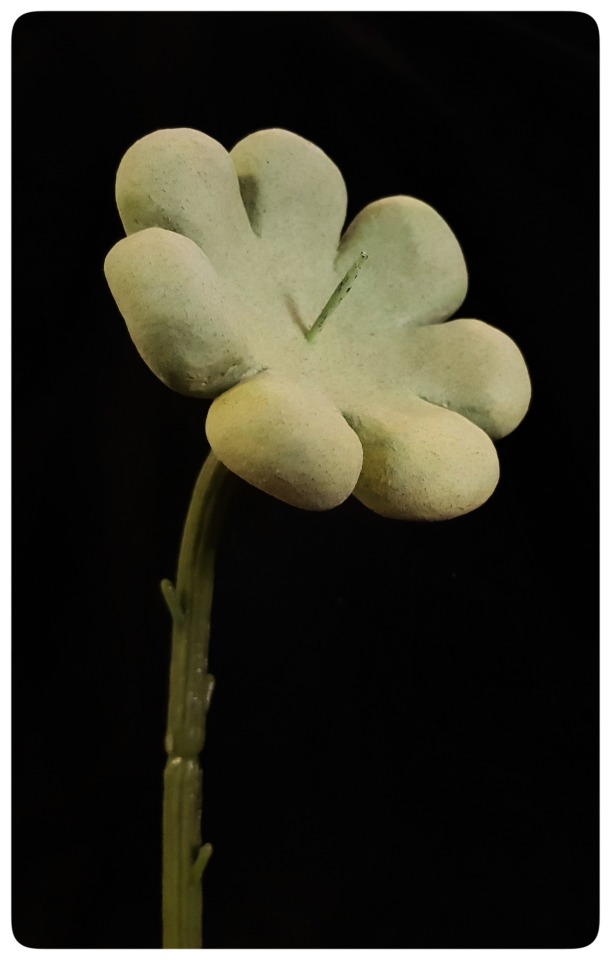
Poke a hole through the petals with the plastic flower stem tip when the petals are dry to the touch but still moist inside.
Let petal dry completely.
Once dry, take out the petals, use wood glue diluted with water to seal petals. Make sure it is sealed just enough without looking too glossy. Dap finger on glossy parts to make them matte.
Let petal dry completely.
Once dry, put wood glue at the tip of the flower stem (the base of the stem needle). Our cupped shaped head held a good amount of glue.
Insert petals on the flower stem through the hole to desired position.
Let dry again for at least a day.
Once dry, trim off any excess stem needle that would be too long for the face’s thickness with wire cutter.
With a toothpick slowly drill a hole into the back of the face at where the stem needle would be best inserted.
Insert the flower face onto flower stem tip.

And you have yourself a good enough new flower friend.
#crafts#crafting#cute art#upcycle#art#upcycling#needlefelt#needlefelted#needle felting#needlefelting#fantasy art#fantasy creature#diy#spooky crafts#kawaii art#weird art#felt art#arts and crafts#creature#character design#character art#witchcrafts#dreamcore#surreal
16 notes
·
View notes
Text
What Is Hemp?
It’s A Trillion Dollar Cash Crop.
youtube
Hemp is a name given to a strain of the cannabis plant.
Hemp is a name given to cultivars of the cannabis plant (Cannabis sativa) that have been selected over many generations for fiber and seed production. Most hemp cultivars contain less than 1.5% THC, a narcotic compound that has the potential for abuse in high concentrations. Cannabis sativa cultivars selected and developed for their drug properties, referred to as marijuana, or dagga, can have a THC content of 3%-25%. Hemp is a bast fiber, producing its fibers in the stalk similar to flax, kenaf, and sun hemp.
Multiple Uses
Hemp fiber and seed are used to produce a wide range of commodities including food and beverage products, fiberboard, insulation, paper, composites, textiles, carpets, animal bedding and feed, cosmetics, body-care products, soaps, paints, fuels, and medicines.
Hemp Seed Food and Beverage Products
Hemp seed contains about 25% protein, 30% carbohydrates, & 15% insoluble fiber. Hemp seed is reported to contain more easily digestible protein than soybeans. Hemp seed contains all 8 amino acids essential to human nutrition. Hemp seed is high in calcium, magnesium, phosphorus, potassium, carotene, sulfur, iron and zinc, as well as Vitamins A, E, C, B1, B2, B3, and B6.
Hemp seed imported into the United States or Canada must be steam sterilized at between 180 degrees F and 212 degrees F for 15 minutes to prevent sprouting. Many US facilities receive imported viable seed under customs bond, steam it, and release it to the consignee or customer with a Certificate of Sterilization.
Hemp food and beverage products include hemp oil and seed, flour, pasta, cheese, tofu, salad dressings, snacks, sweets, hemp protein powders, soft drinks, beer, and wine. Hemp beer can be made from the seed, flowers, sprouts, and seed cake that is a by-product of oil pressing. Hemp beer is produced and sold in Europe and the United States of America.
Hemp Oil
Hemp seed is 25% to 35% oil, and is one of the oils lowest in saturated fats (8%). Hemp seed oil is the richest source of polyunsaturated essential fatty acids (80%). Hemp seed oil is the only common edible seed oil containing Omega-6 Gamma-Linolenic Acid. Hemp seed oil is very fragile and not suitable for cooking.
Pressed hemp seed oil must be bottled immediately under oxygen-free conditions, and must be refrigerated in dark, airtight containers.
Fiberboard
Hemp fiberboard tested by Washington State University Wood Materials and Engineering Laboratory proved to be two and one half times stronger than wood MDF composites, and the hemp composite boards were three times more elastic.
Hemp herds can be used in existing mills without major changes in equipment. Russia, Poland and other Eastern European countries already manufacture composite boards from hemp and other plant materials.
Pulp and Paper
The major use of hemp fiber in Europe is in the production of specialty papers such as cigarette paper, archival paper, tea bags, and currency paper. The average bast fiber pulp and paper mill produces 5,000 tons of paper per year. Most mills process long bast fiber strands, which arrive as bales of cleaned ribbon from per-processing plants located near the cultivation areas.
Composites
Until the 1930’s, hemp-based cellophane, celluloid and other products were common, and Henry Ford used hemp to make car doors and fenders. Today hemp herds can be used to make new plastic and injection-molded products or blended into recycled plastic products. Hemp fibers are introduced into plastics to make them stiffer, stronger and more impact resistant. Hemp plastics can be designed that are hard, dense, and heat resistant, and which can be drilled, ground, milled, and planed.
Hemp plastic products currently made include chairs, boxes, percussion instruments, lampshades, bowls, cups, spectacles, jewelry, skateboards, and snowboards.
Hemp Animal Care
Hemp horse bedding and cat litter are produced and sold in Europe. After oil is extracted from the hemp seed, the remaining seed cake is about 25% protein and makes an excellent feed for chicken, cattle, and fish. Chickens fed hemp seed on a regular basis have been found to produce more eggs, without the added hormones used in most poultry plants.
Fuels
Hemp seed oil can be combined with 15% methanol to create a substitute for diesel fuel which burns 70% cleaner than petroleum diesel. Hemp stalks are rich in fiber and cellulose, making them conducive for conversion into ethanol and methanol fuels that have a higher octane than gasoline and produce less carbon monoxide. These biomass fuels are also free from sulfur, and do not require the addition of lead and benzene used to boost octane and improve engine performance in fossil fuels. Ethanol holds condensation, eliminating oxidation and corrosion, and is reported to reduce carbon dioxide emissions by more than 30%.
Hemp has been studied in Ireland as a biomass fuel to generate electricity. Hemp has been reported to yield 1000 gallons of methanol per acre year. Hemp stalk can be converted to a charcoal-like fuel through a thermochemical process called pyrolysis. Henry Ford operated a biomass pyrolitic plant at Iron Mountain, Michigan in the mid-20th.
Paints and Varnishes and Binders
Until the 1930's, most paints were made from hemp seed oil and flax seed oil. Hemp oil makes a durable, long lasting paint that renders wood water-resistant. Hemp herds have the potential to make glues for composite construction products that are non-toxic and superior to binders currently used. With this technology, industry can produce composite products where all components are derived from hemp.
Markets for Hemp Pulp
Some paper manufacturers already have the equipment to process decorticated hemp fiber into paper. The leading European supplier of non-wood pulp, Celesa, currently produces about 10,000 tons per year of pulp from hemp. The use of hemp pulp in blends with recycled fiber of other non-wood fibers is growing. Tests by several European pulp and paper producers suggest that hemp pulp may replace cotton cost effectively in several specialty paper applications.
Potential Markets for Medical Application of Low-THC Hemp Cultivars
Many cannabis medicines have been produced using cannabis cultivars high in THC, and there has been medical research into cannabis that is low in THC and high in CBD. CBD is a cannabinoid that does not have many of the psychoactive effects associated with THC. CBD has been used to treat the following medical conditions: epilepsy, dystonic movement disorders, inflammatory disorders, pain, chronic insomnia, chorea, cerebral palsy, and Tourette's syndrome. According to a July 1998 report by the National Institute of Health, CBD may hold promise for preventing brain damage in strokes, Alzheimer’s disease, Parkinson’s disease and even heart attacks and has been found to prevent brain cell death in an experimental stroke model.
Please share this with your friends.
youtube
#hemp farming#hemp foods#hemp fuel#industrial hemp#hemp plastic#hemp paper#hemp fibers#hemp seeds#hemp prohibition
4 notes
·
View notes
Text

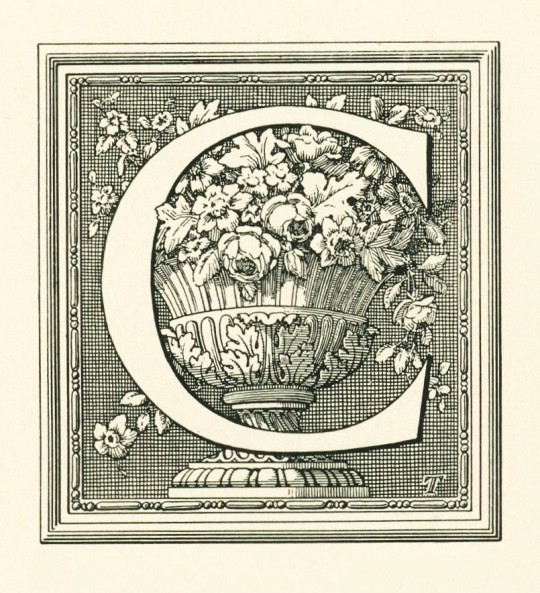
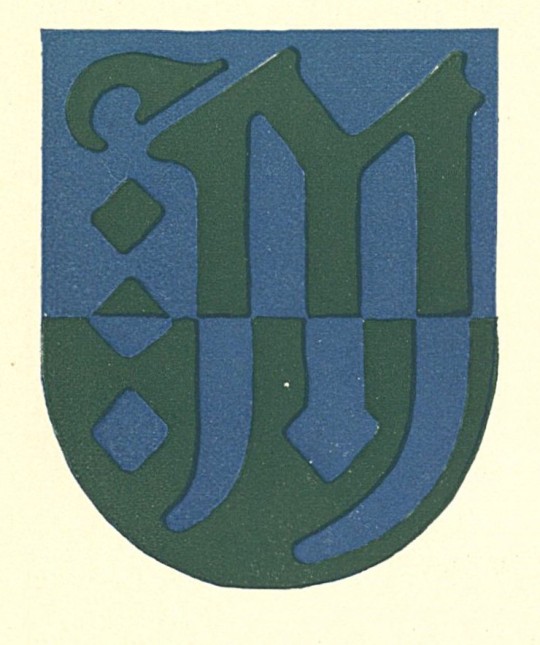

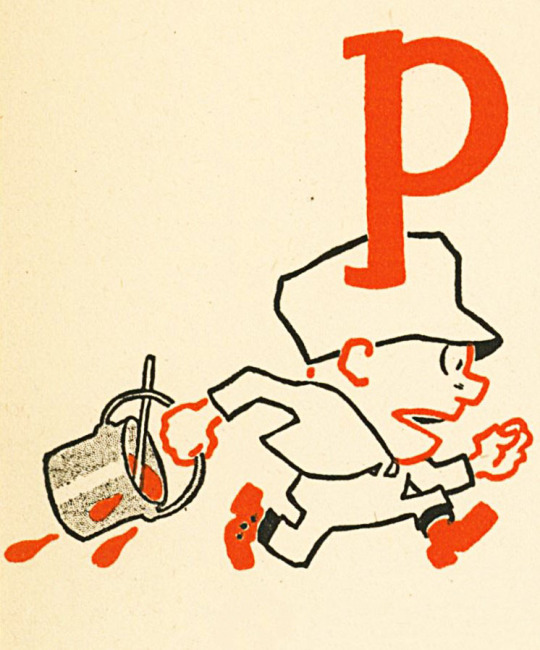


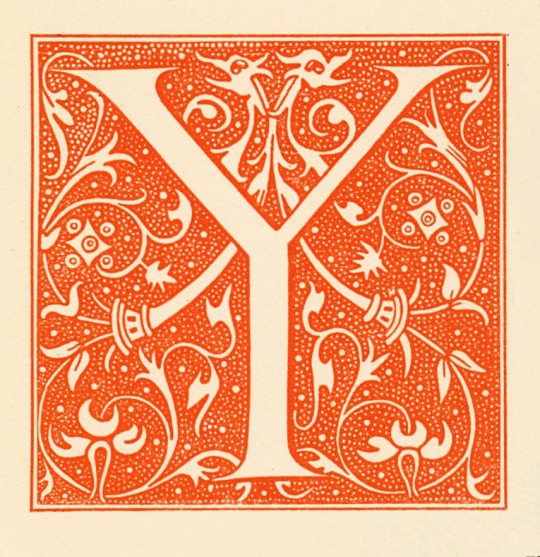
Typography Tuesday
Today, we complete the initials from Some Examples of the Work of American Designers, edited and arranged by J. M. Bowles. Shown here from top to bottom are:
A - Ralph Fletcher Seymour
C - Walter D. Teague
M - Guernsey Moore
O - Frederic Goudy
P - Charles E. Howell
T - Egbert G. Jacobson
W - Carlton D. Ellinger
Y - Bruce Rogers
Some Examples of the Work of American Designers was printed in Philadelphia by Edward Stern & Co. for Dill & Collins Co. Papermakers in 1918 on thirty styles of paper manufactured by Dill & Collins Co in Philadelphia.
View our previous post on initials from this volume.
View our other Typography Tuesday posts.
#Typography Tuesday#typetuesday#initials#historiated initials#Some Examples of the Work of American Designers#J. M. Bowles#Edward Stern & Co.#Dill & Collins Co.#paper samples#20th century type
127 notes
·
View notes